Our Blog - South Africa Safari - Day 8
This was our "big" safari day, in Kruger National park. Kruger is one of the largest game reserves in Africa, and is part of the Great Limpopo Transfrontier Park. Basically, there were game reserves in Zimbabwe, South Africa, and Mozambique that had fences at the borders. They agreed in 2000 to take down the fences between the parks, allowing the animals to take up their old migratory routes that were blocked due to political boundaries (the fences)
We headed out early, before breakfast. Like the other drive, we also had open trucks here as well.
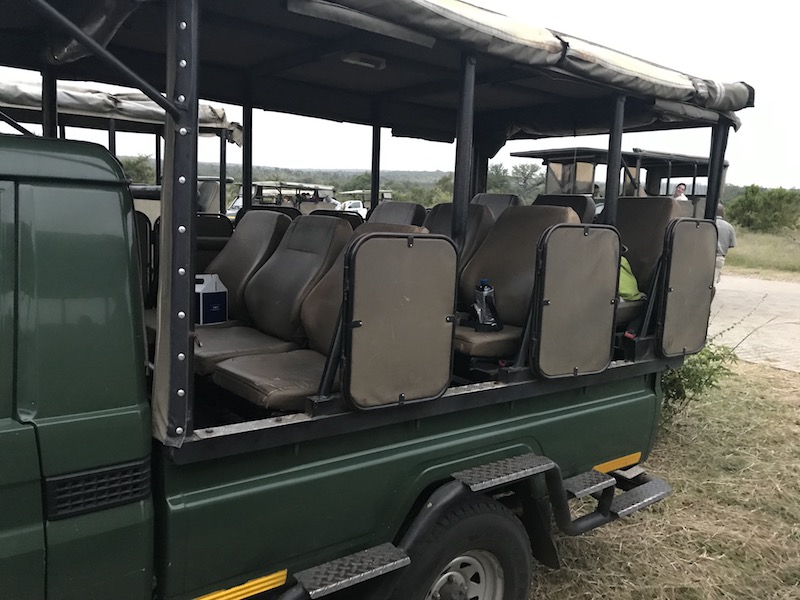
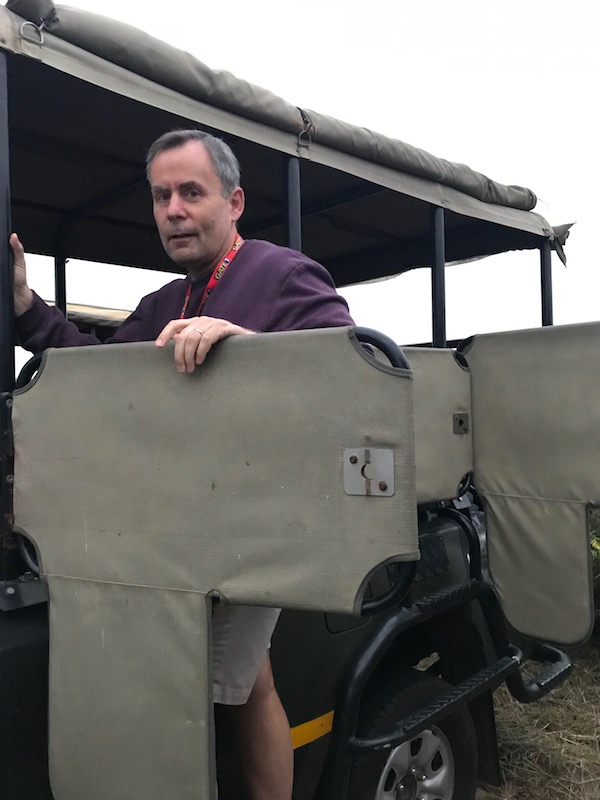
The first thing that we saw was a Cape Buffalo, but too far away to really get much of a view.
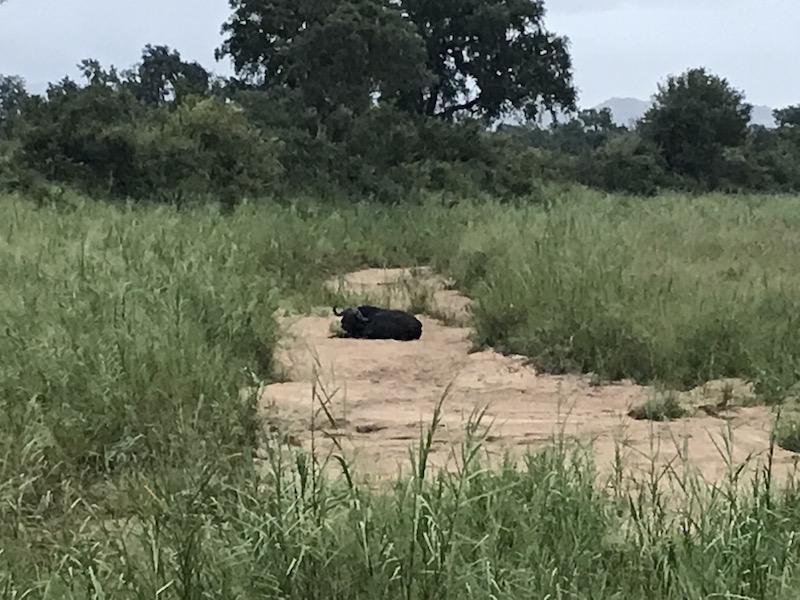
On our first game drive, we didn't see any zebras, but Kruger made up for that. We ended up seeing quite a few herds of them.
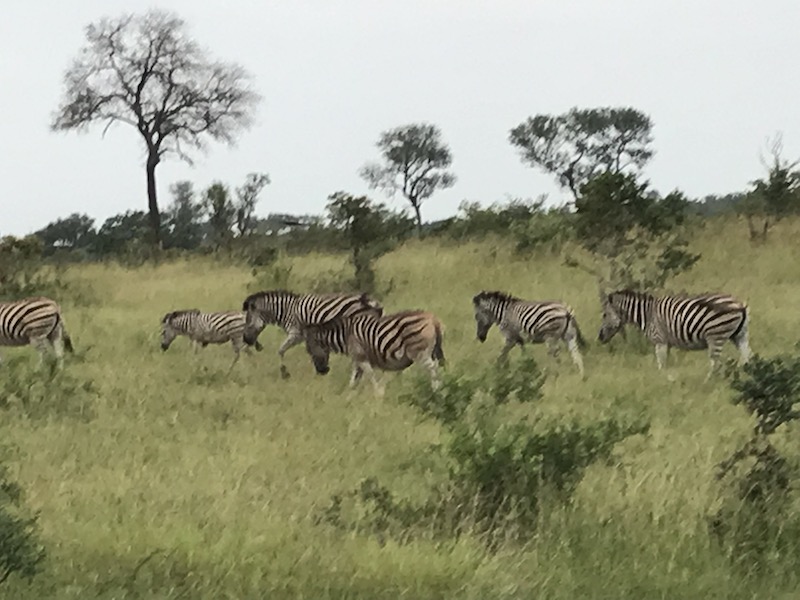

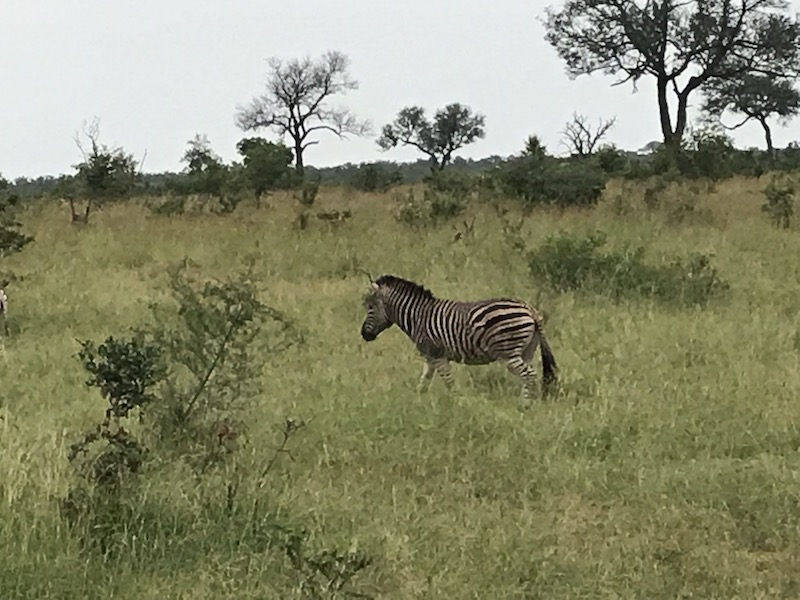

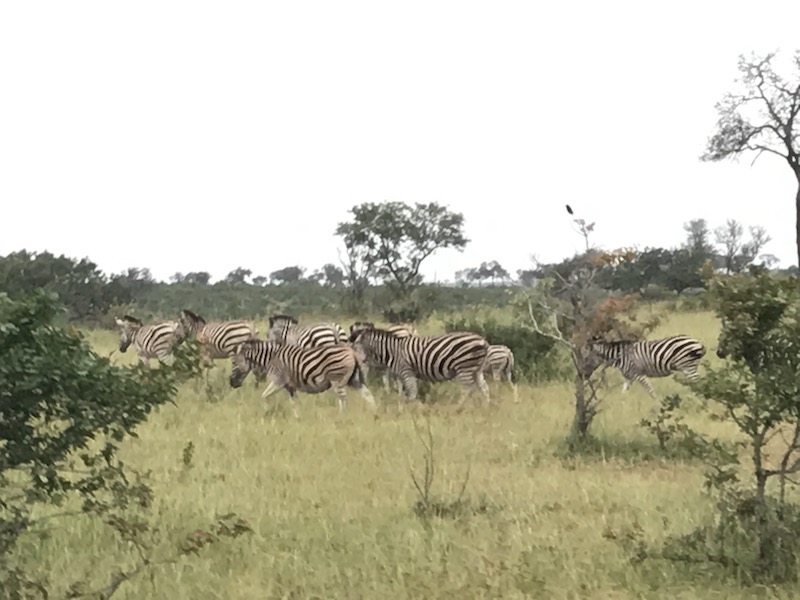
Another thing that we didn't see in our first drive that we saw today was a pack of African wild dogs (also called African painted dogs). Tom thinks it would be cool to have seen them attacking some other animal, but I'm not really sure I wanted to see something killed. The African wild dogs are actually endangered and there are thought to be only 400 in all of South Africa, so we were pretty lucky to see them.
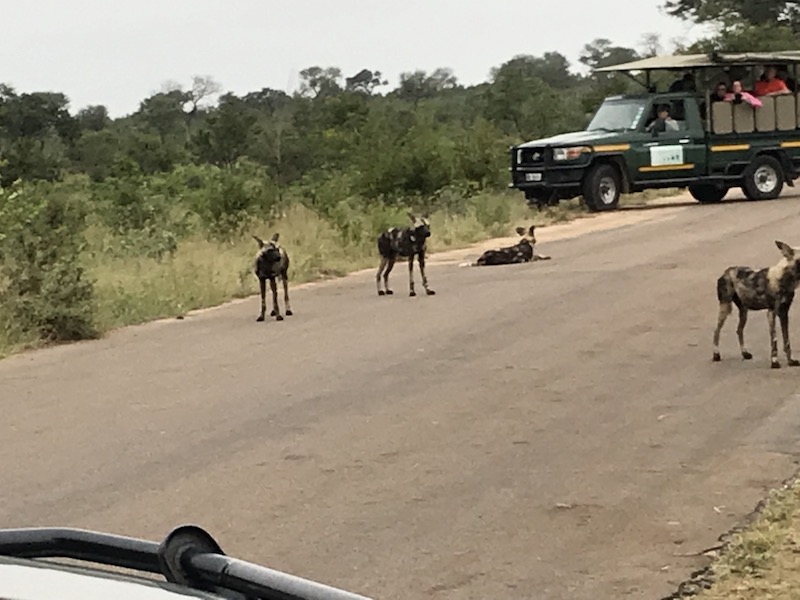
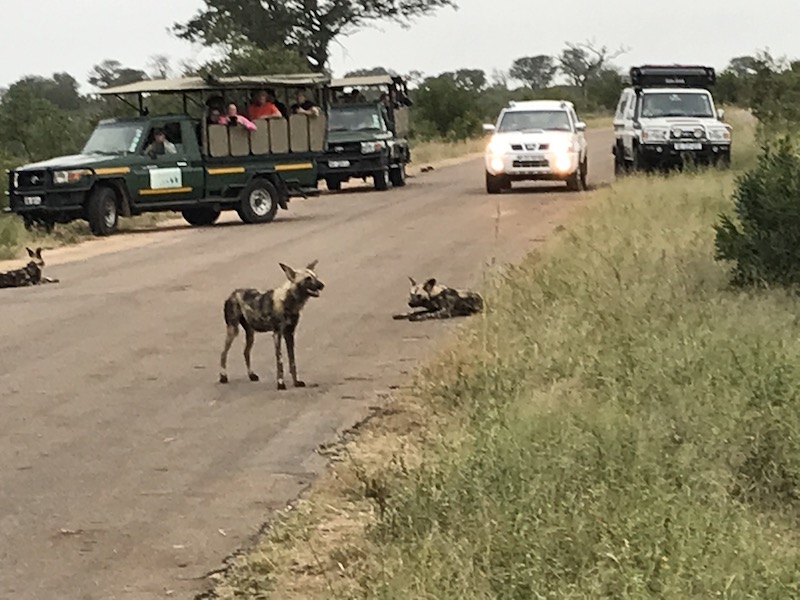


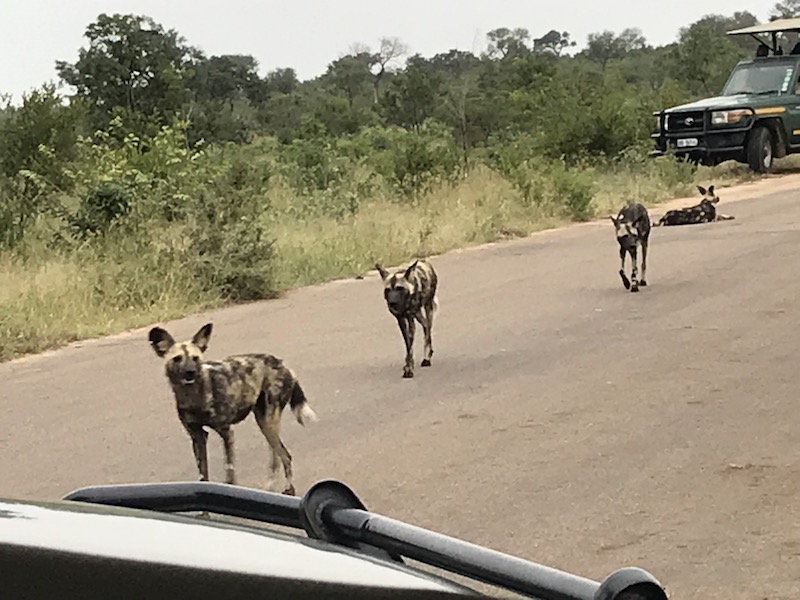

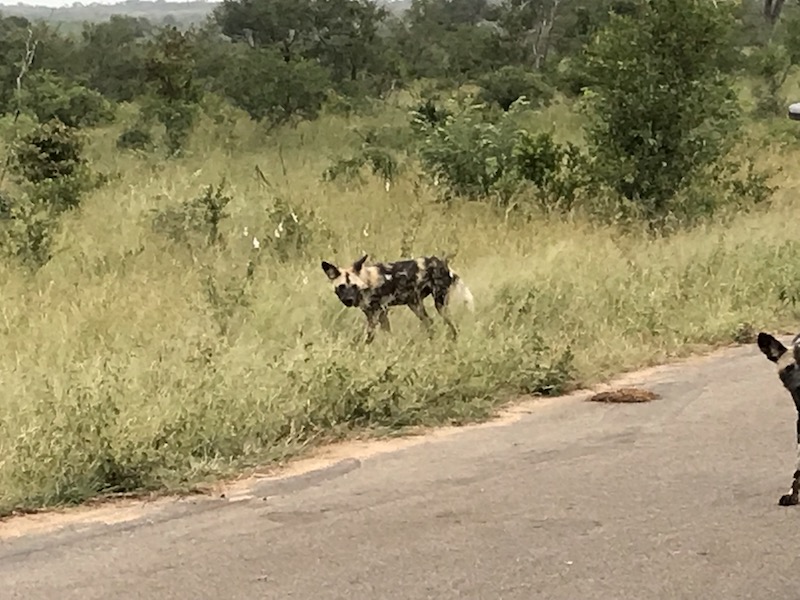
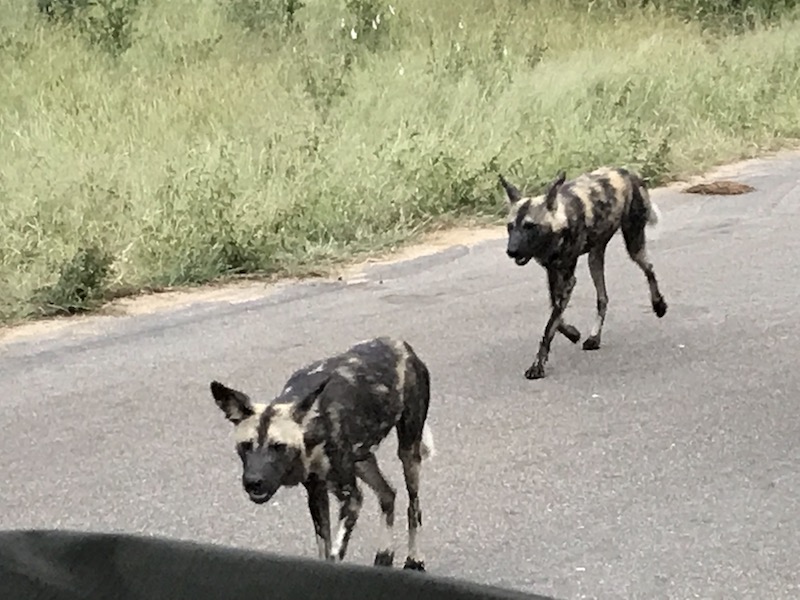
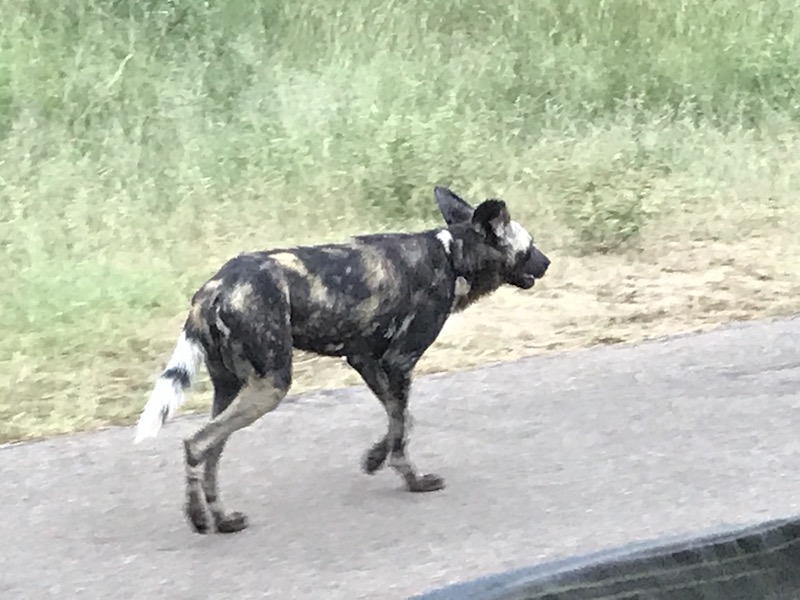
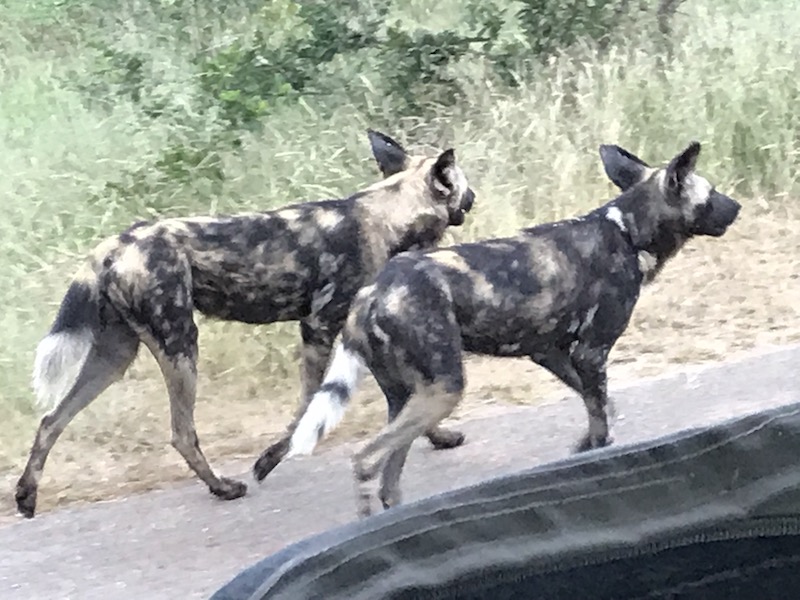
Another herd of impala ... good thing that the wild dogs weren't around!
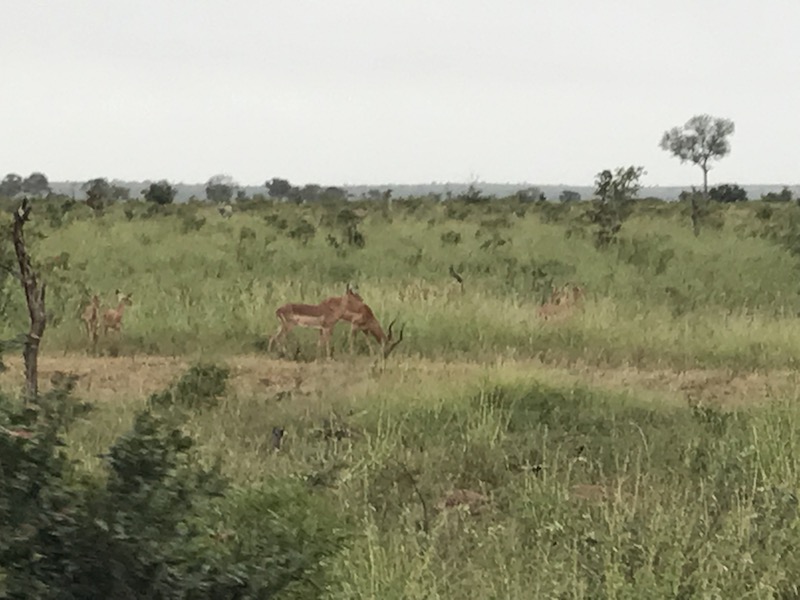
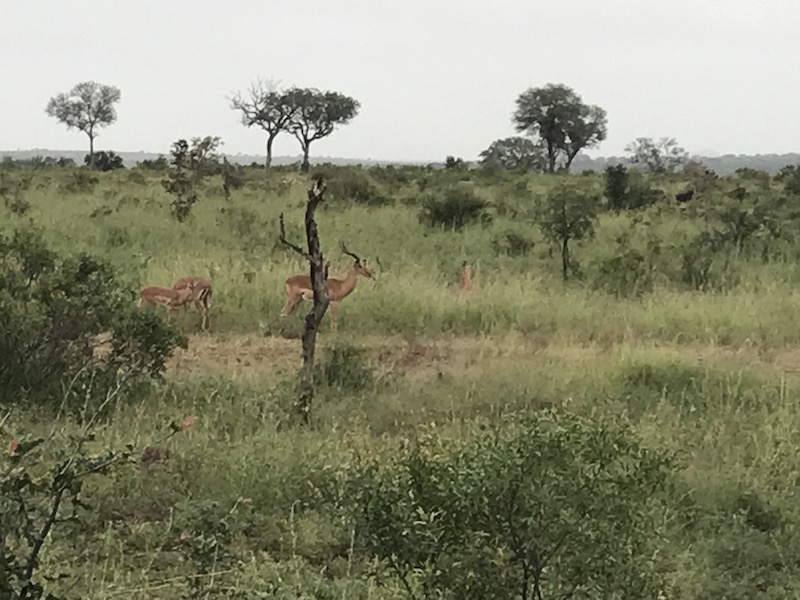
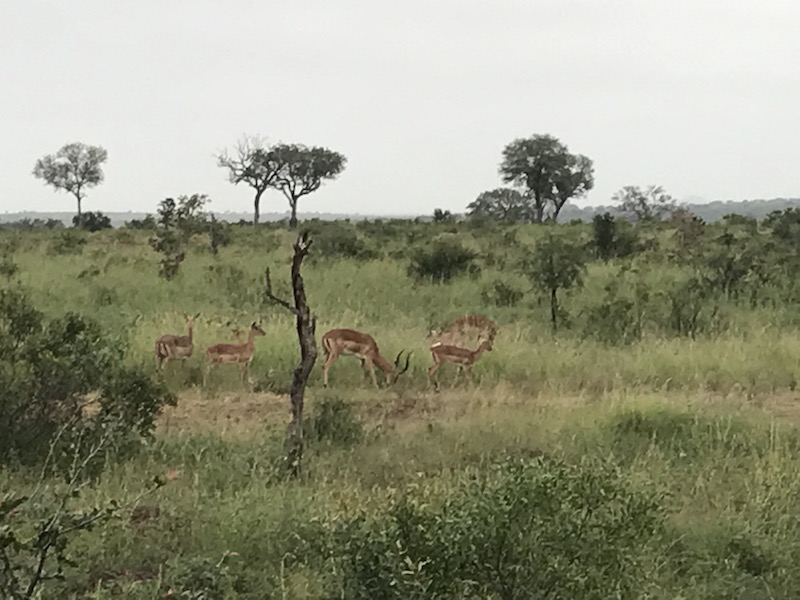
Another solitary male elephant, hiding behind the trees ... but you can see one tusk in one picture, and his ears in the last one.



Rather silly, but just a short video of the ears moving.
More impala ....I tried really hard to get good pictures of the antlers and their distinctive shape.
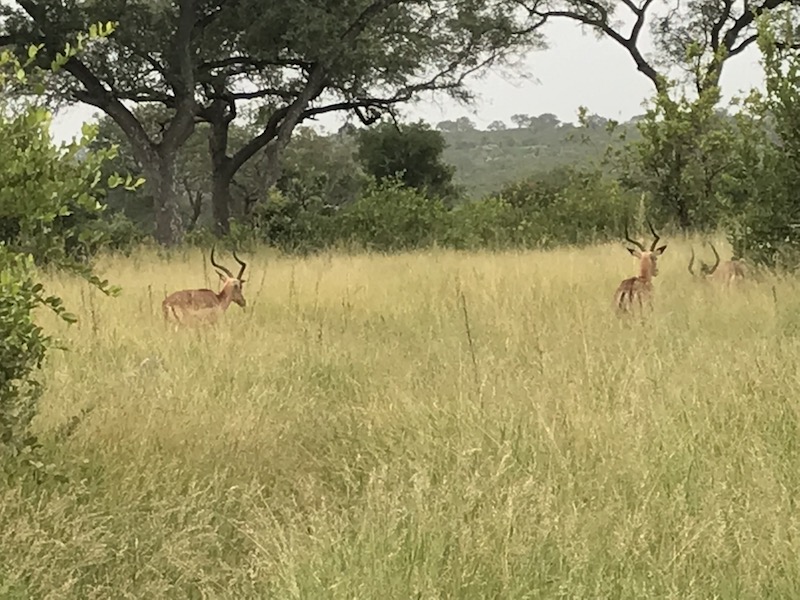

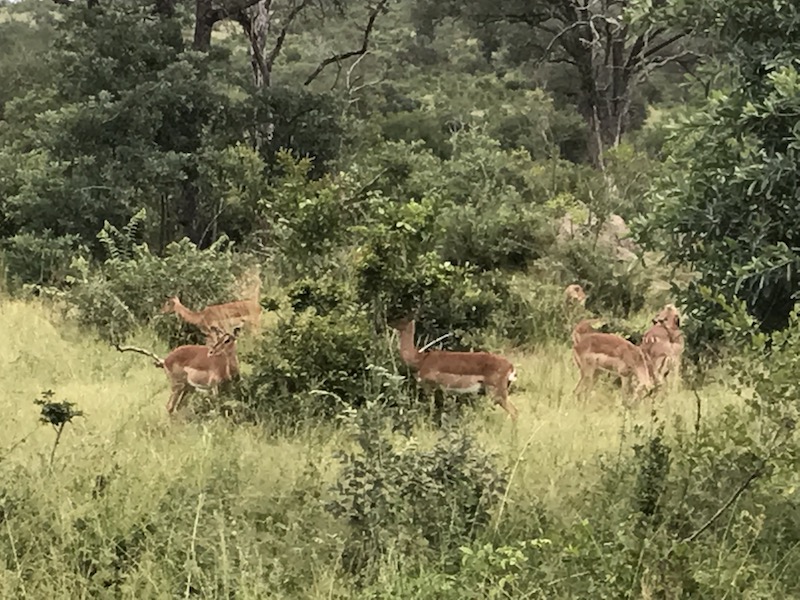
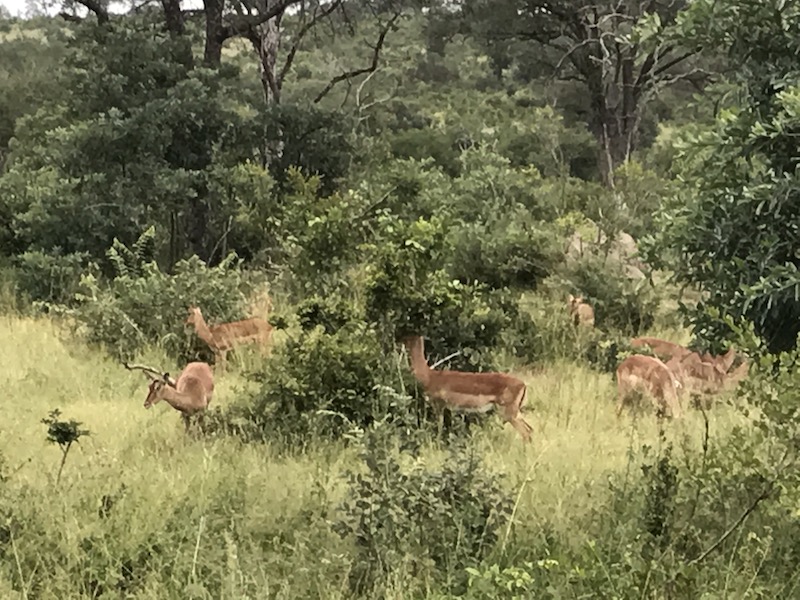
More zebras, which according to the information we have are Damara zebras. A little joke here ... we tend to pronounce zebra like 'zeeeebra' with a long E sound. Our tour guide would joke with us, telling us we were saying it wrong ... zebra is pronounced like the girls name 'debra' ... we don't say 'deeeeeebra' ... so why do we say 'zeeeeebra'? So for the rest of the trip, we would say "look, there is Debra the Zebra".

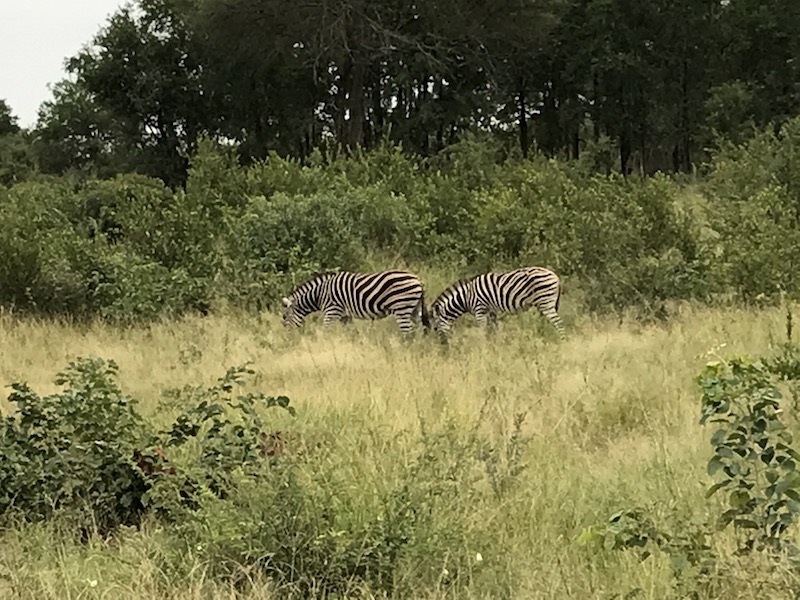
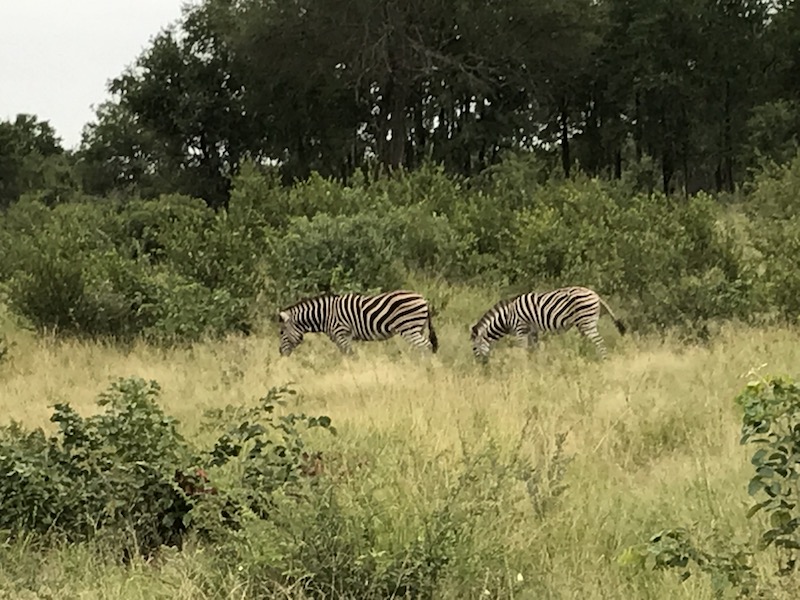
This one will be a bit hard to see ... but ... it is a lion. I went ahead and circled him to make it a bit easier. Now that you know what you are looking for, in the 2nd and 3rd pictures, you can see him in the middle of the picture, walking away from us. Then he stops and looks around (next picture), and then heads off to the right.

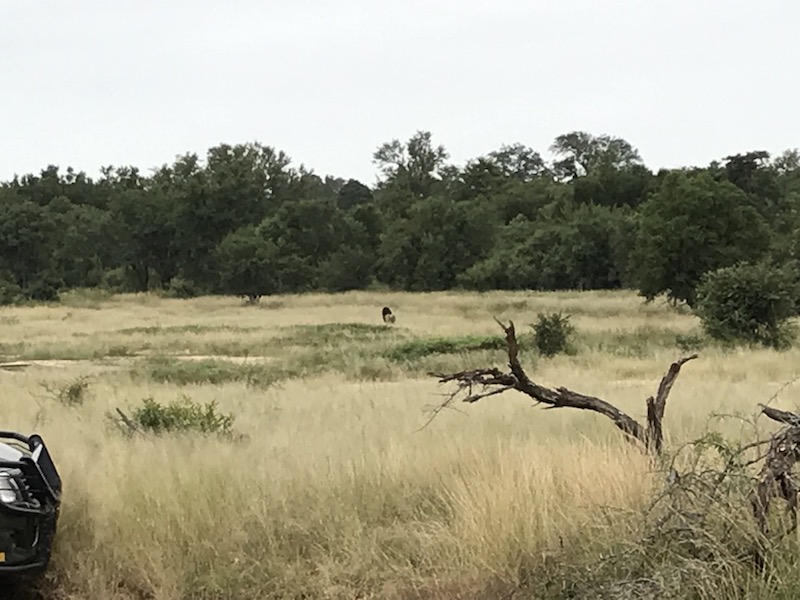
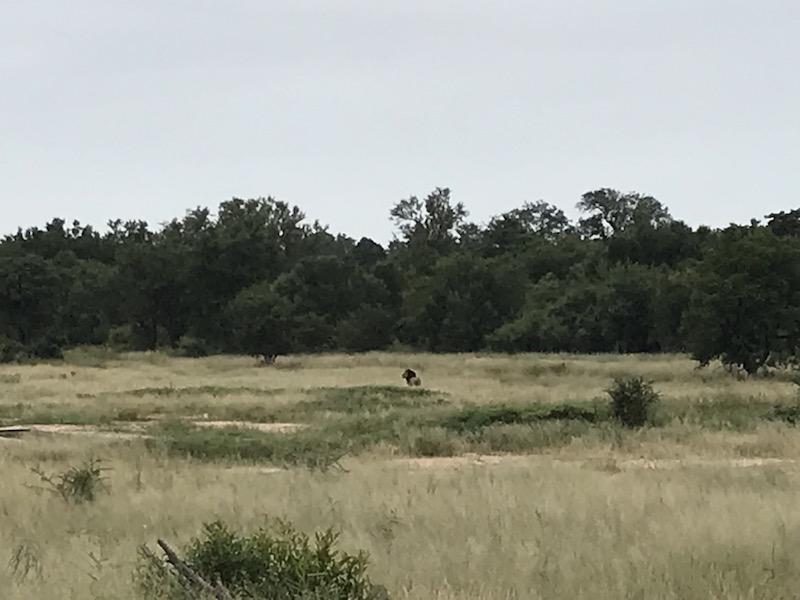
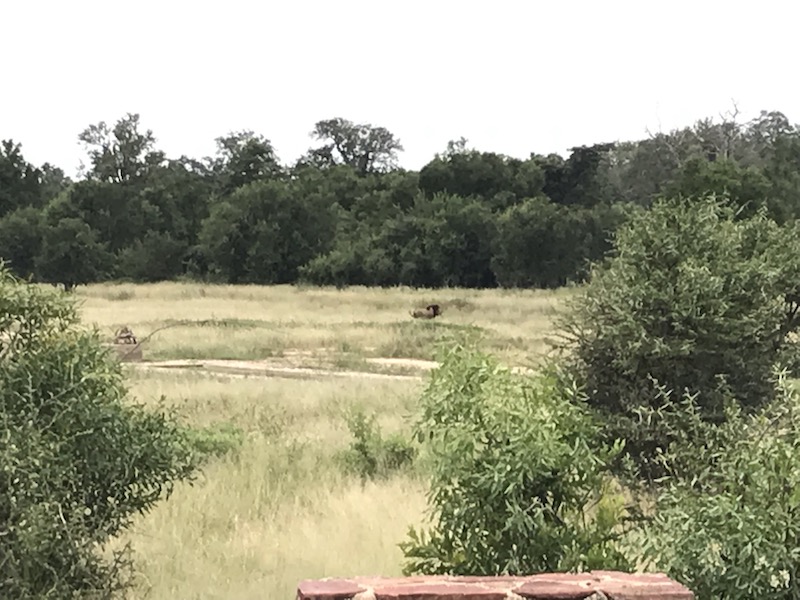
In the water, there is a hippo. I know .... it looks like a black rock ... but really! Trust me! It is a hippo.

Okay, by now I suspect you are tired of Impalas, but they are pretty cute. It is kinda interesting ... look at the first picture, and then the 2nd .... all of the Impalas except for the one eating on the left have all turned to look at something off to the right. All of their little heads are looking that direction!
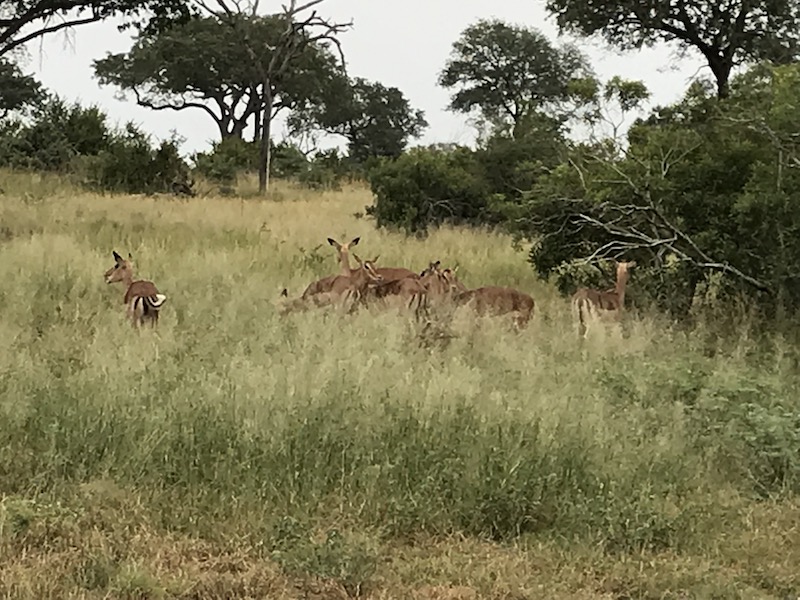
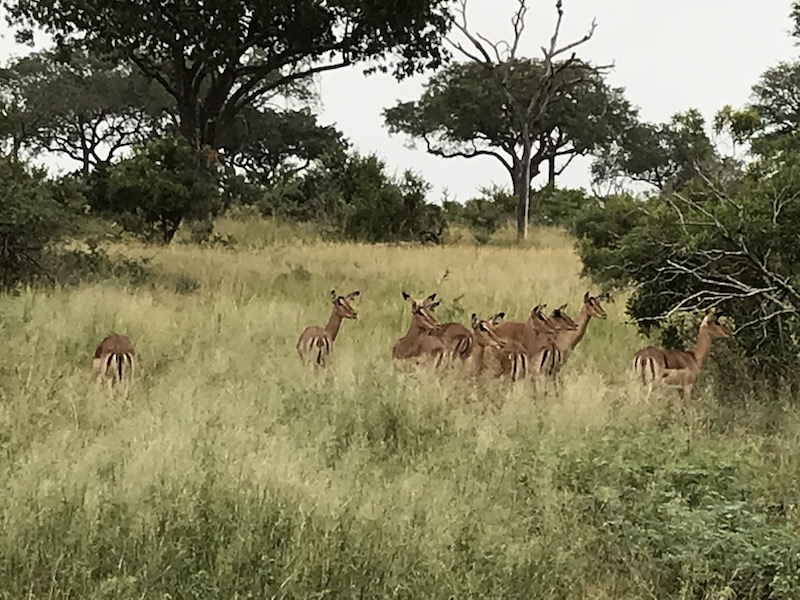
A blue starling, like we had seen on the previous game drive.
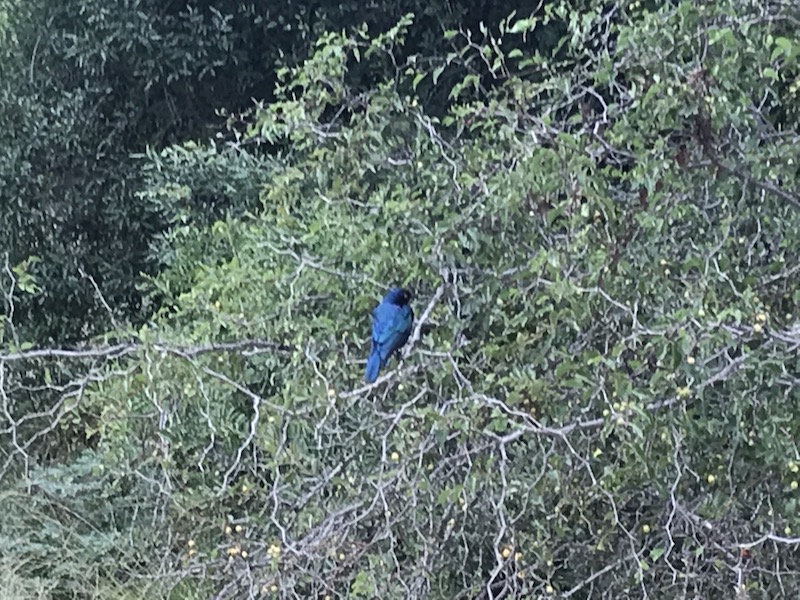
A little bit of a close-up on the weaver bird nests.
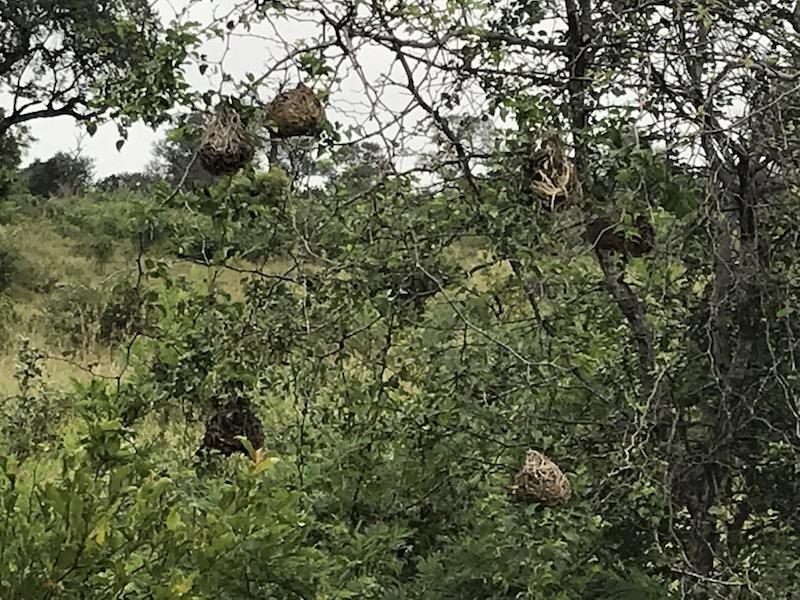
Another set of Impalas looking to the right, but this time, we knew what they were looking at. In the 2nd picture, you can see a baboon hugging a tree in the middle. Then we got a few more Impala pictures.

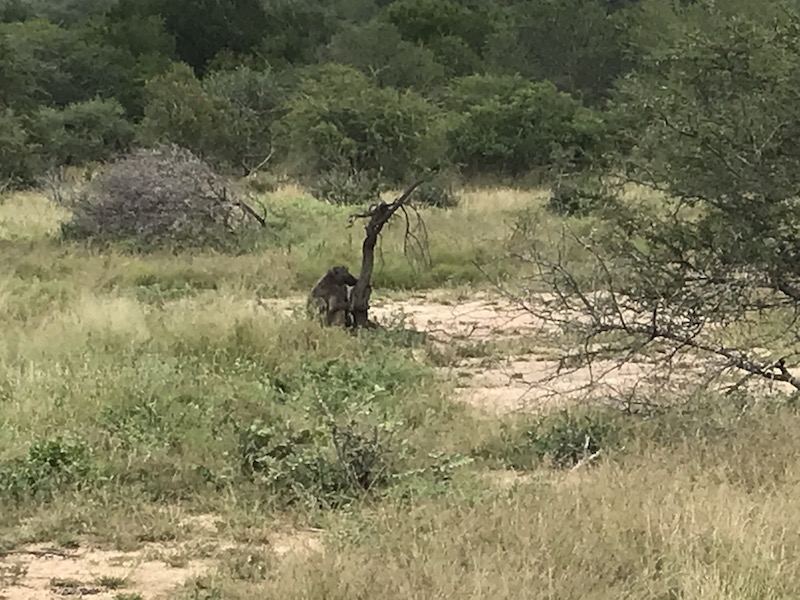
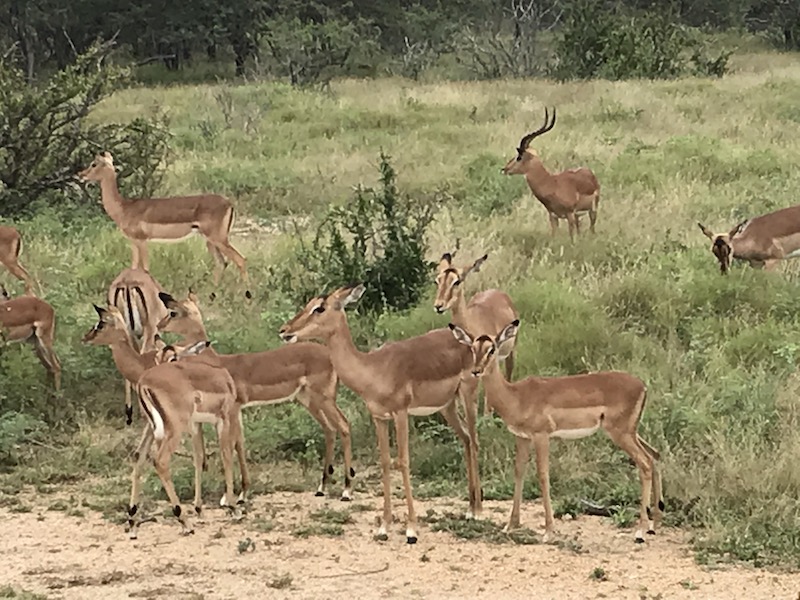
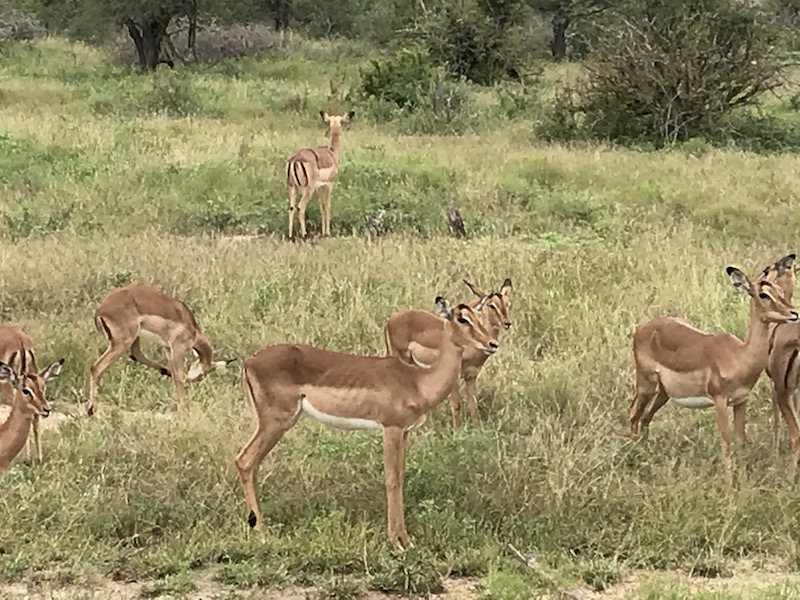

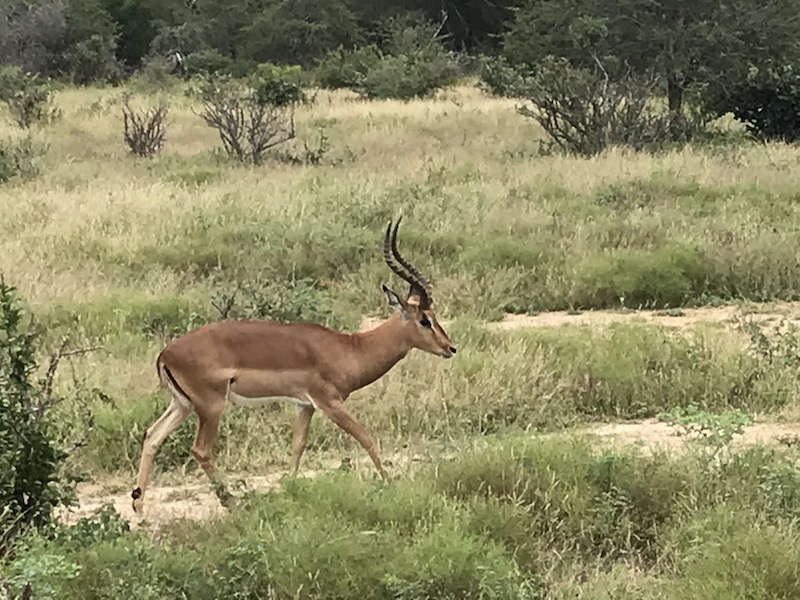
Here is a whole group of Impalas, just slowing walking across the road. You can see that we were not the only truck there, and they didn't seem to be bothered by our presence.
A few baboons. We actually didn't see that many baboons or monkeys in the park. We saw more of them at the Cape of Good Hope, in fact.
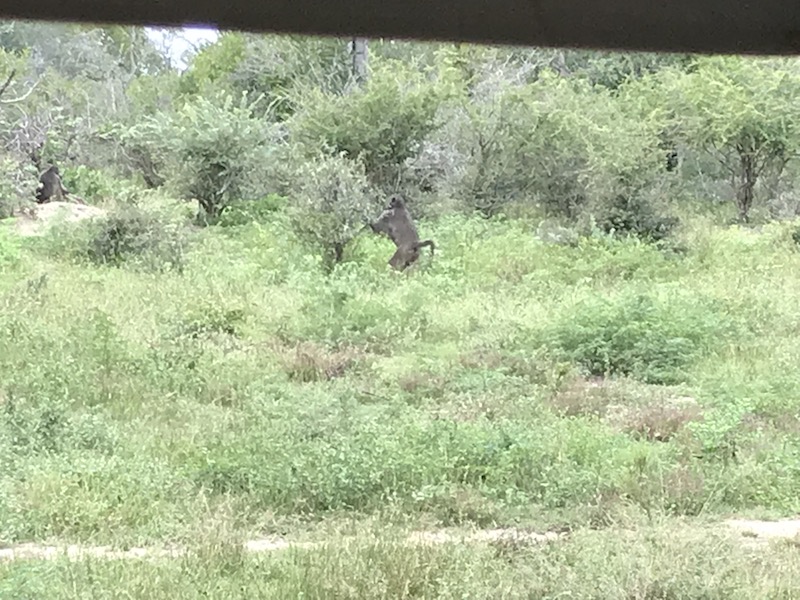
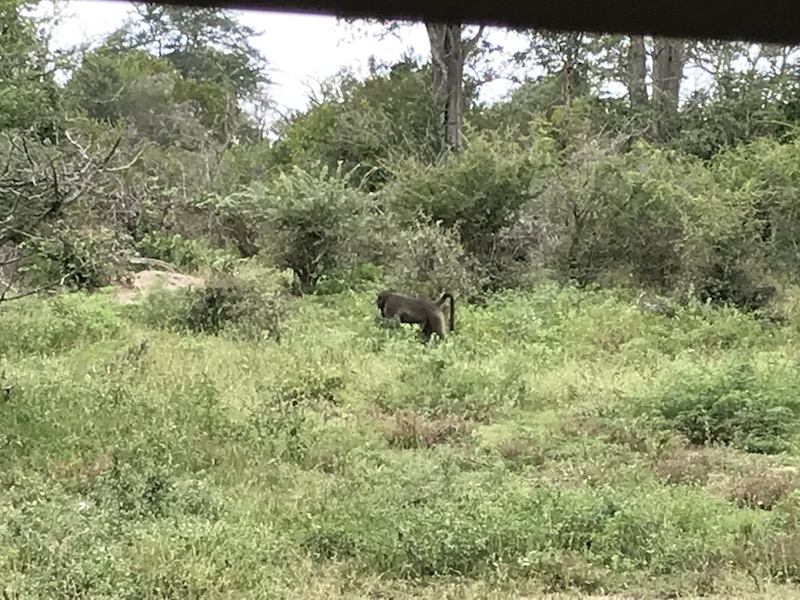
Another antelope that we saw quite a few of is the greater kudu. We think these are females, since they don't have horns. However, I guess they could be males that are less than 12 months old. since their horns start growing between 6-12 months and then start twisting when they hit 2 years old.

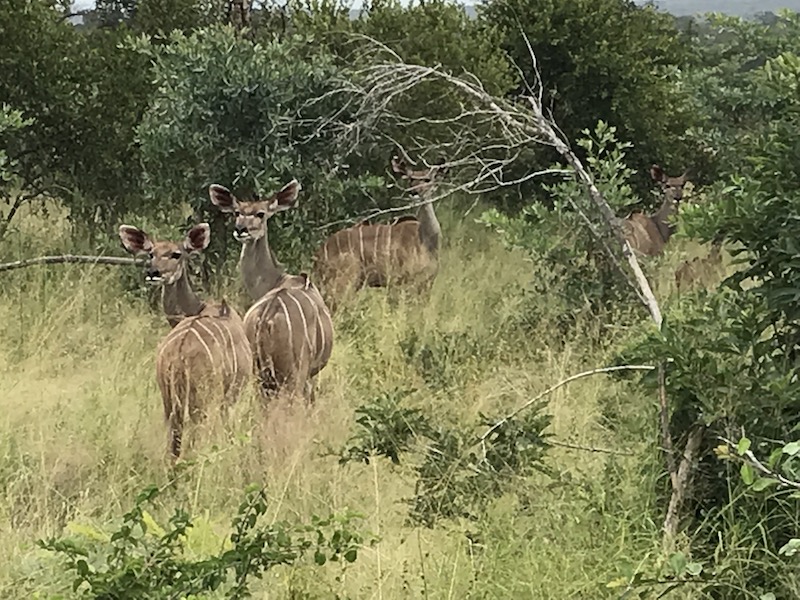
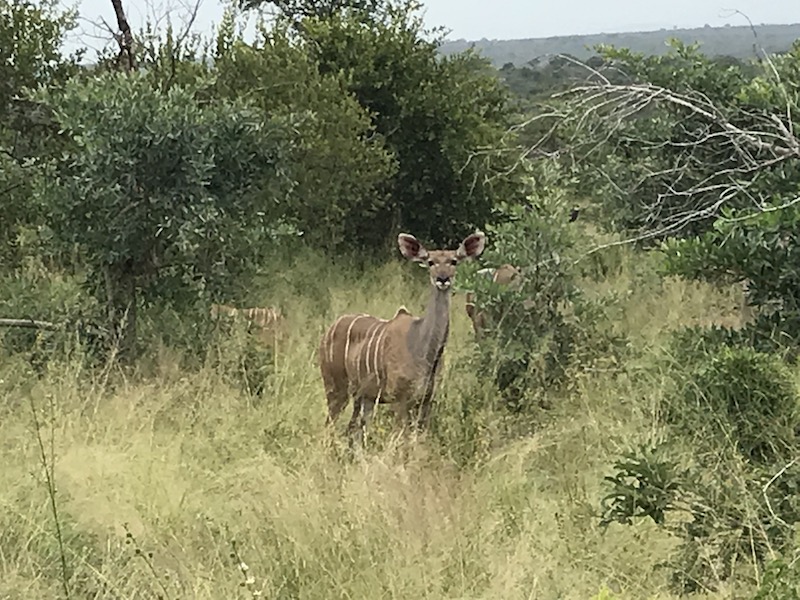
Just rocks, but I thought these were fairly interesting :-)

Another highlight of the trip was seeing black rhinos. On the first game drive, we didn't see any rhinos even though one of the other trucks in our group did. This time, we came across a couple of black rhinos together. They were pretty close to the road so we could get good pictures and videos. I won't "bore" you with all of them, since I think I took about 50 pictures of the rhinos in the space of about 5 minutes!
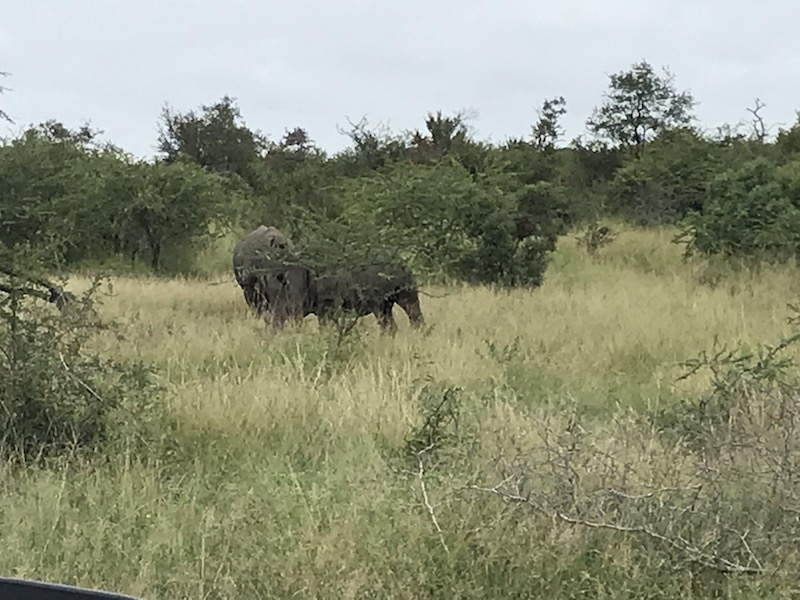
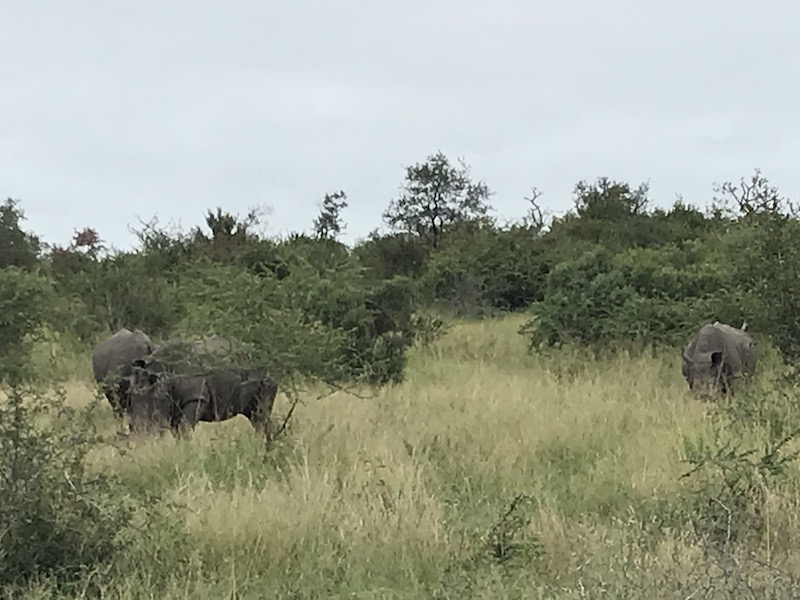
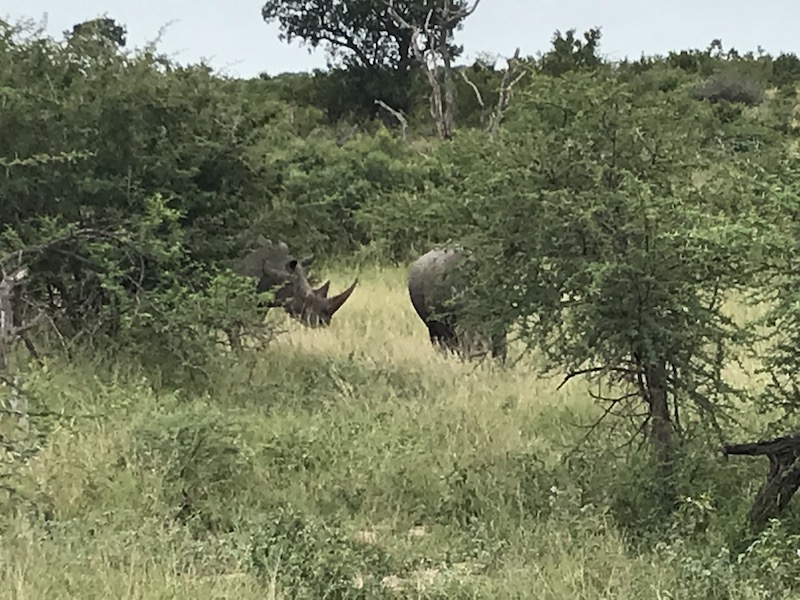
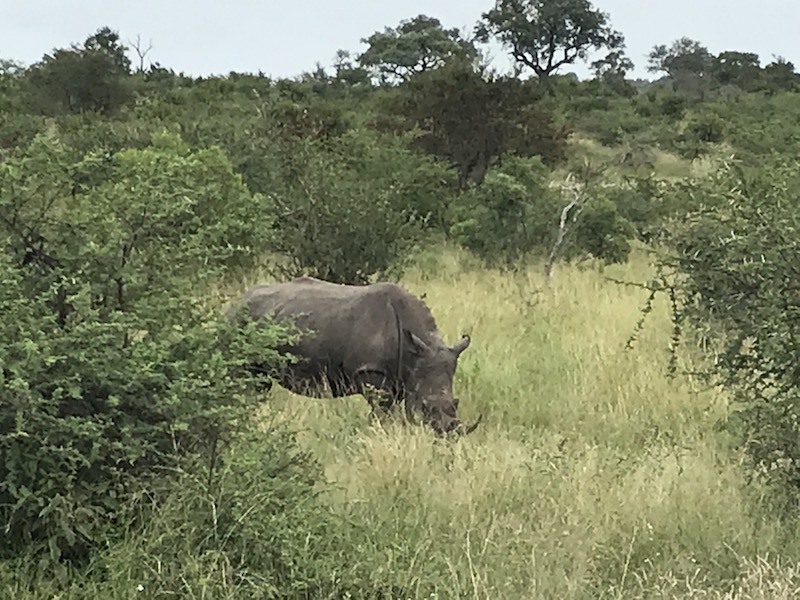

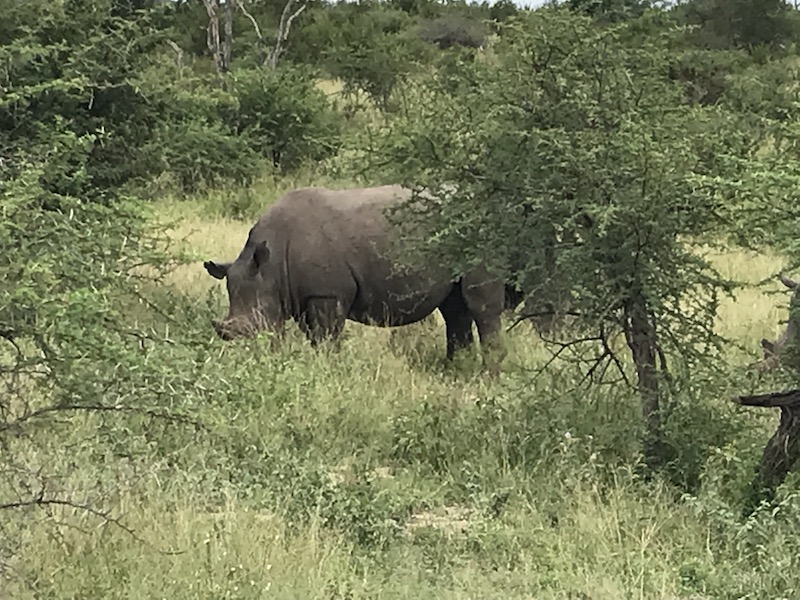

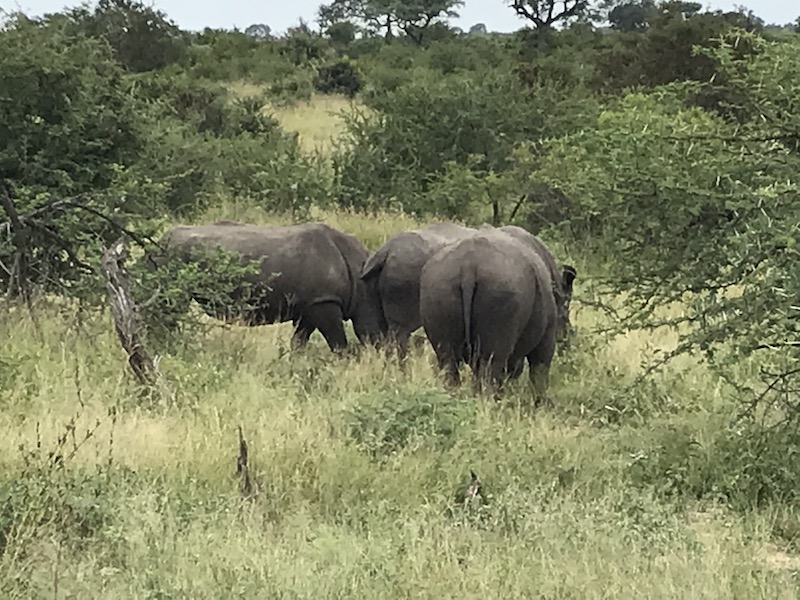
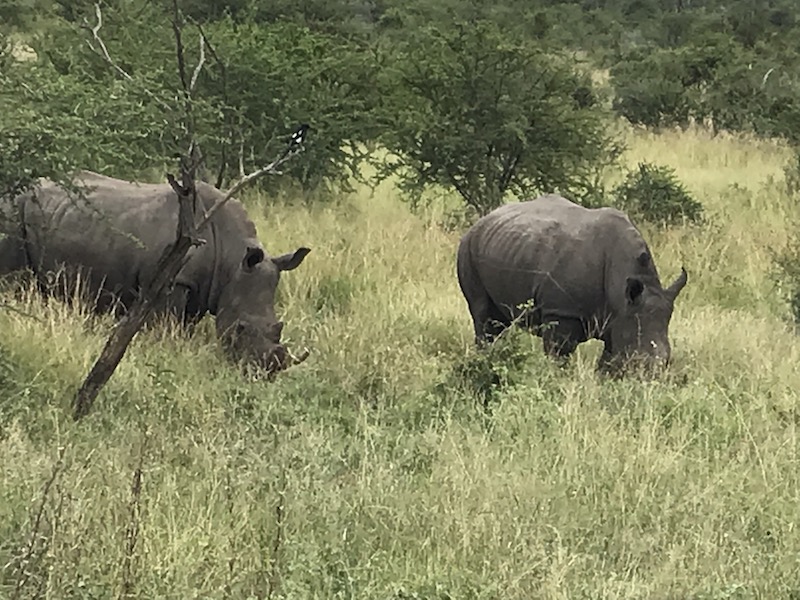
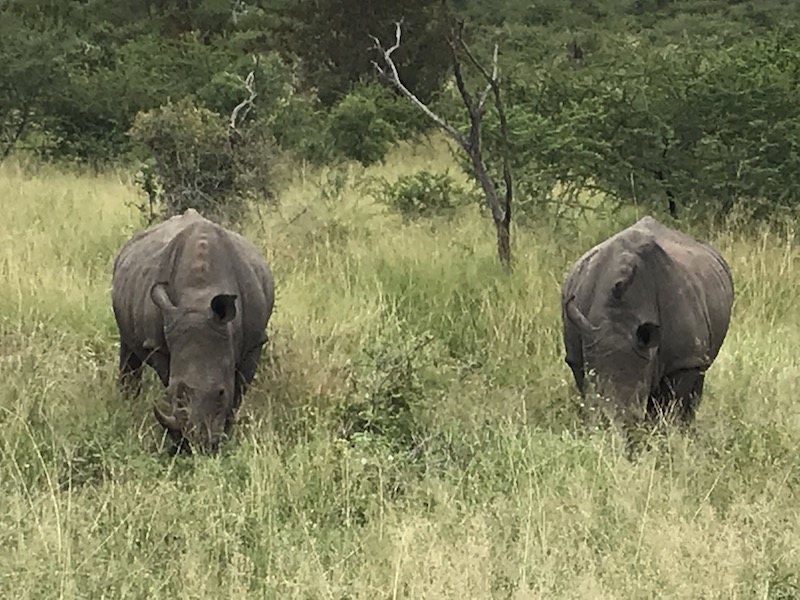
Okay, well maybe I have a few too many of the rhinos, but there were 3 of them and they ended up coming pretty close to us.
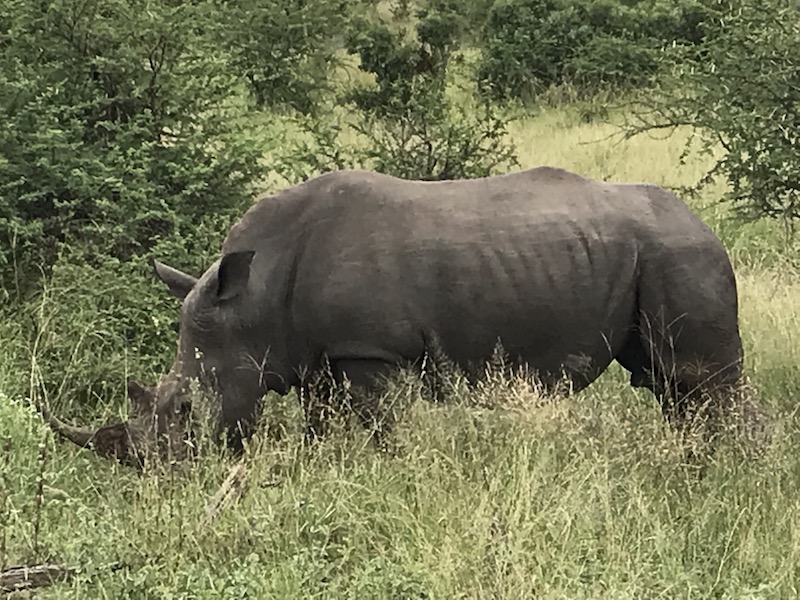
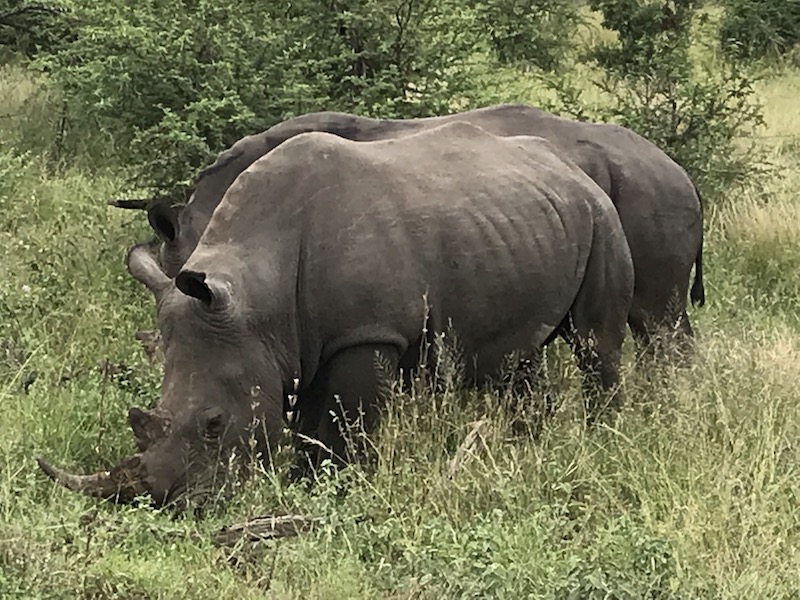
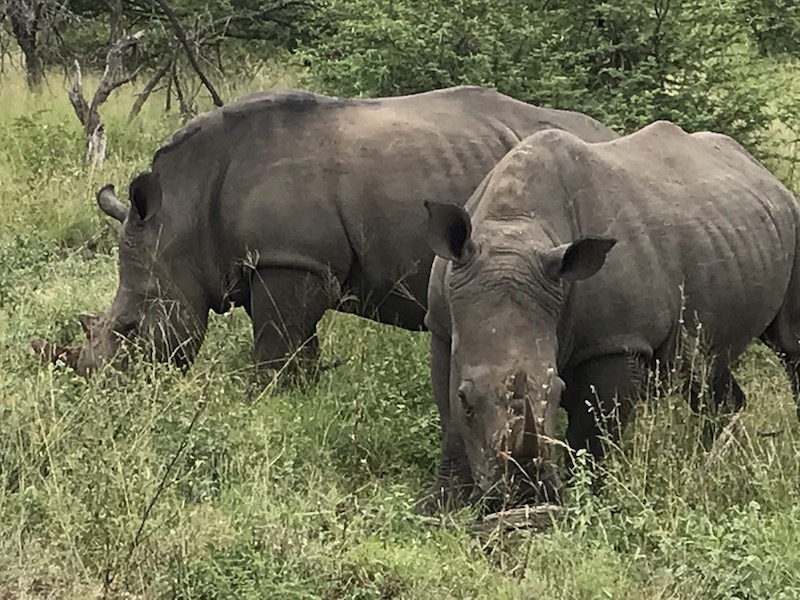
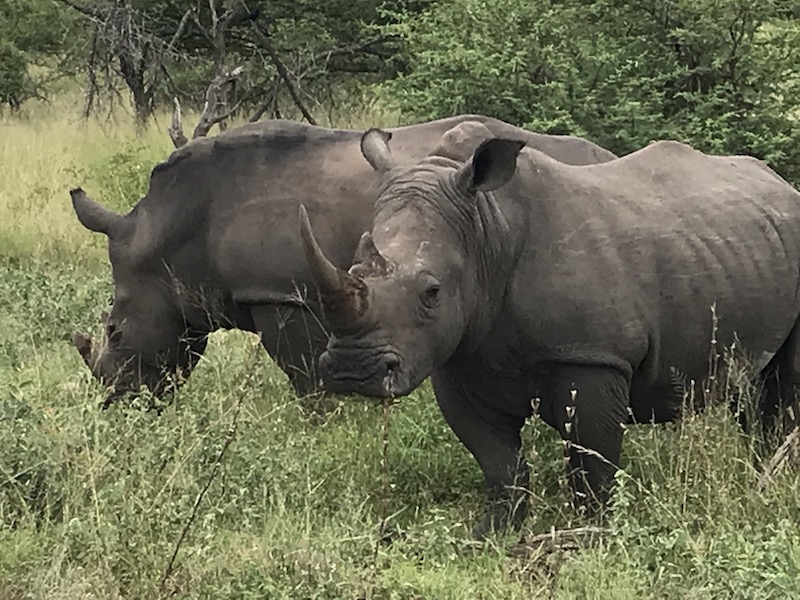
We came across a little family of warthogs (well, I call them a family), as they were crossing the road. A warthog is identifiable by the two pairs of tusks protruding from the mouth and curving upwards. The lower pair, which is far shorter than the upper pair, becomes razor-sharp by rubbing against the upper pair every time the mouth is opened and closed. Mental Note: don't touch the lower pair! Unfortunately, only 1 picture that was very good since by the time we got to them, they were almost all the way across the road and quickly disappeared in the tall grass.

One of the better bird pictures, we were able to get fairly close to a pair of southern yellow-billed hornbills.
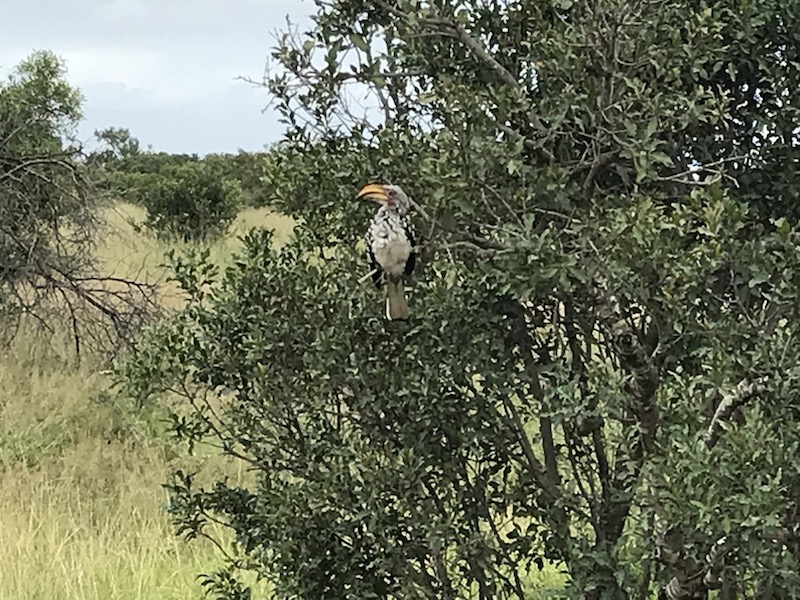
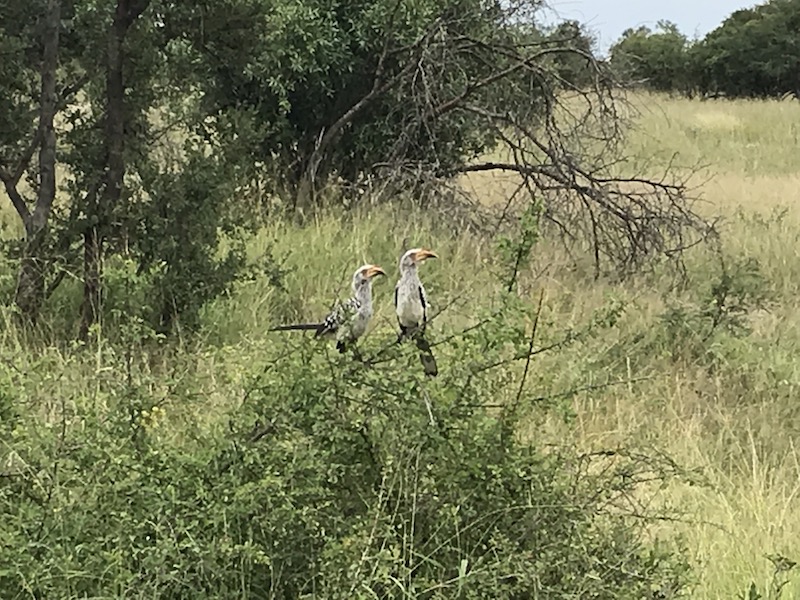
Blue wildebeest, Both sexes possess a pair of large horns, which are shaped like parentheses. The colors range from a deep slate or bluish gray to light gray or even grayish brown, with adults being darner than their young, who are born a tawny brown color. The back and flanks are slightly lighter than the underparts. Dark brown, vertical stripes are seen between the neck and the back of the ribcage.
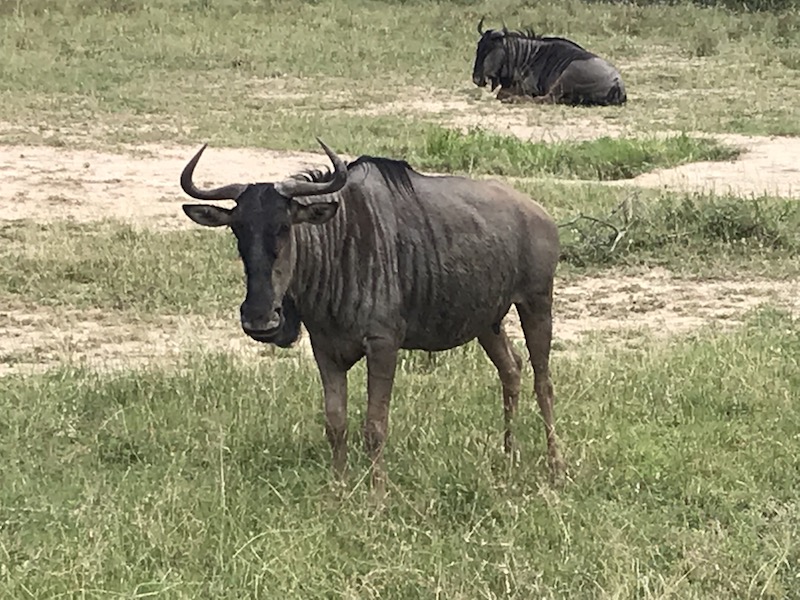
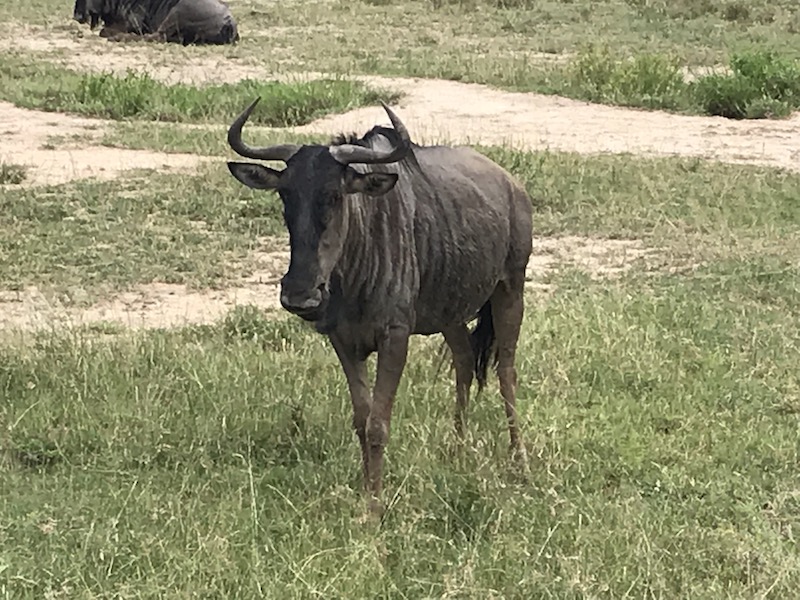

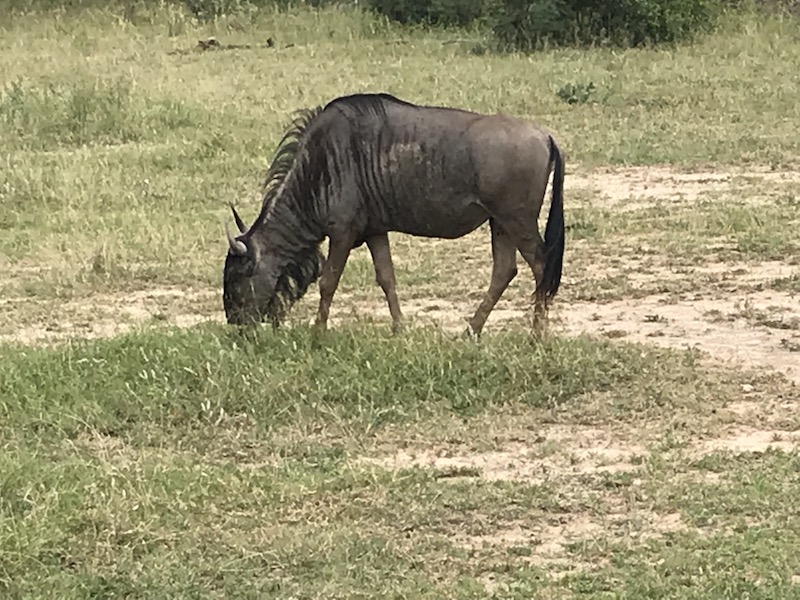
I know, I know ... more impalas!
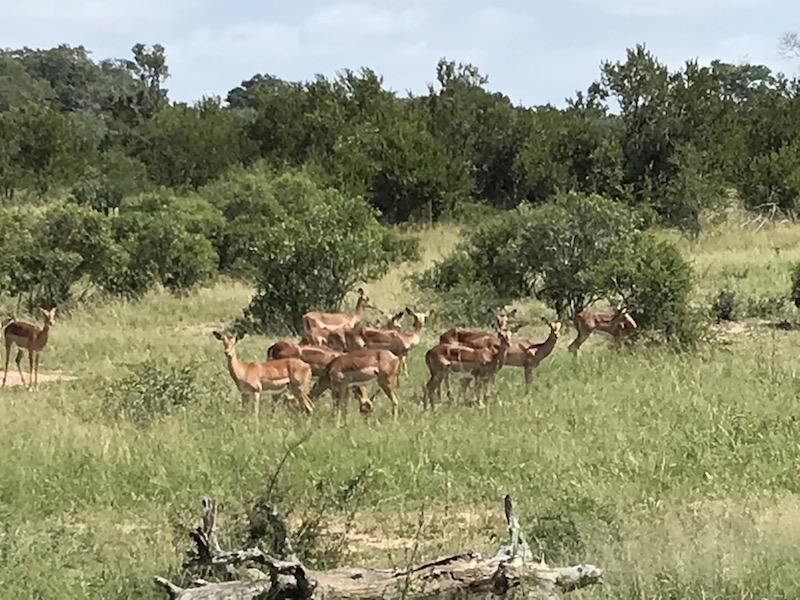
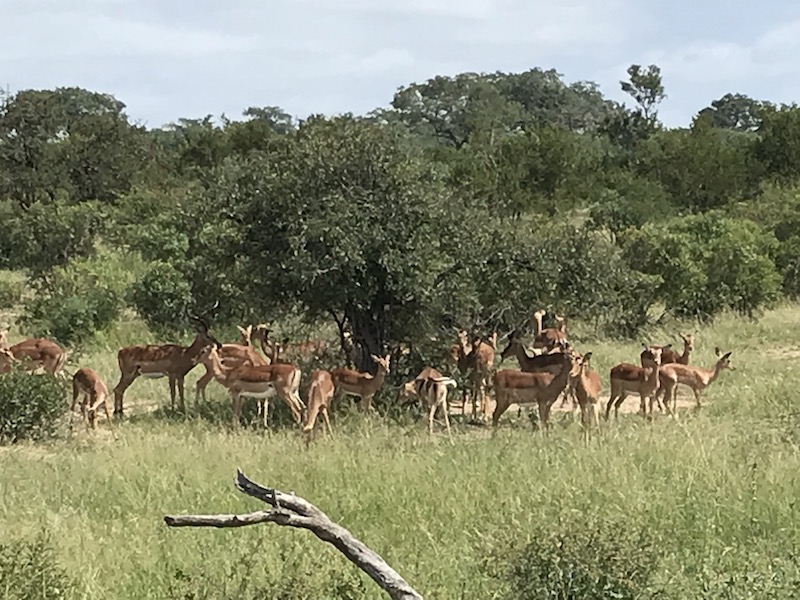
We then headed up to a plateau in the middle that gave great views of the park. Standing up here, I'm surprised we got to see ANY animals, since there is so much open land between the various roads.
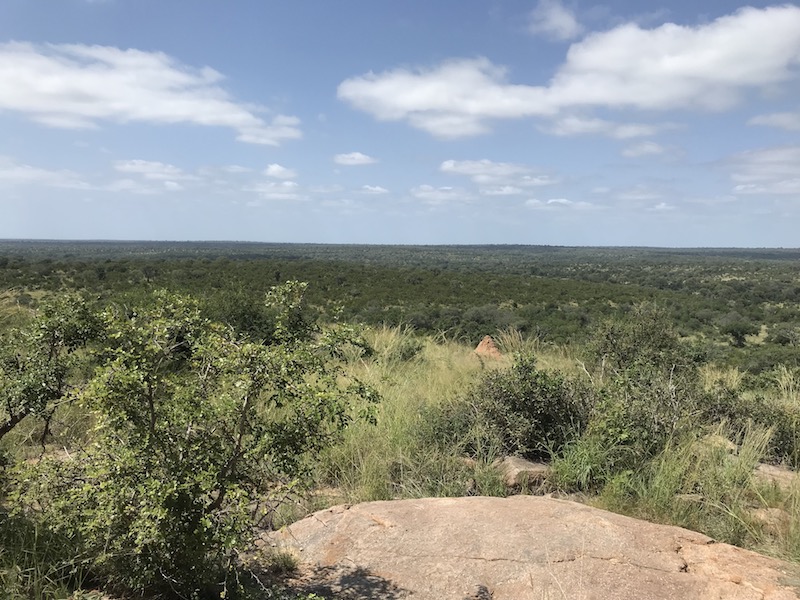
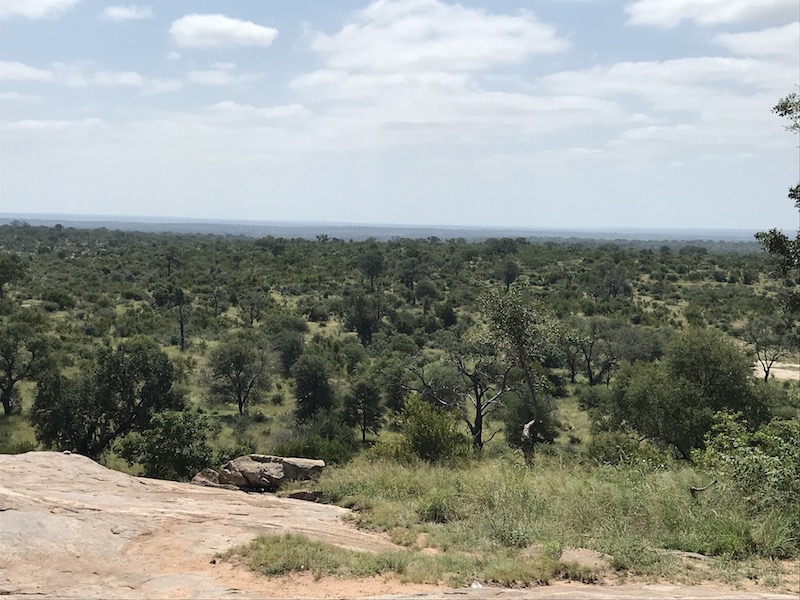
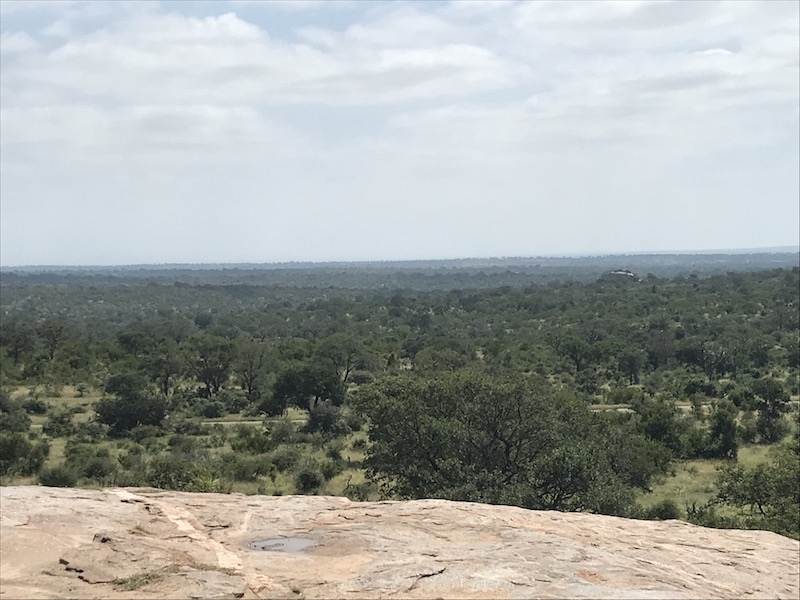

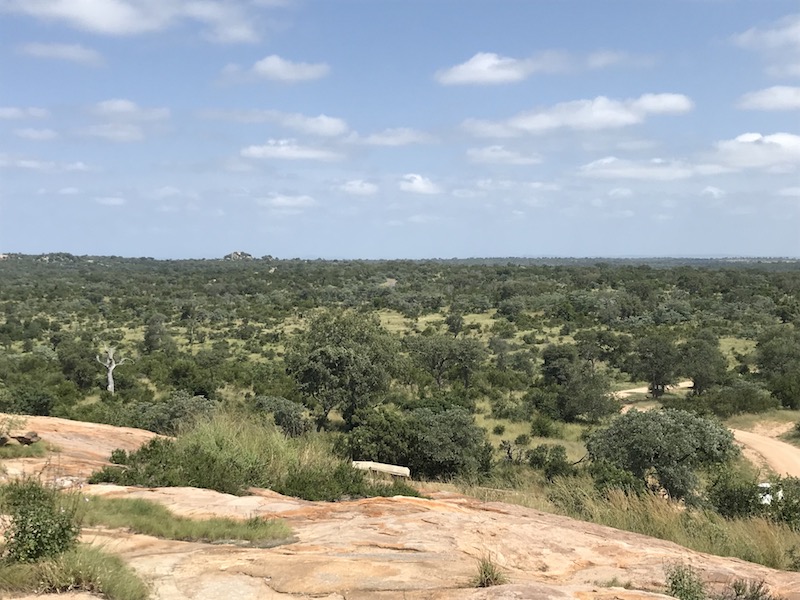
I'm not 100% sure if these are Nyalas or Kudus ... I'm thinking Kudus but they seem to look similar to me.
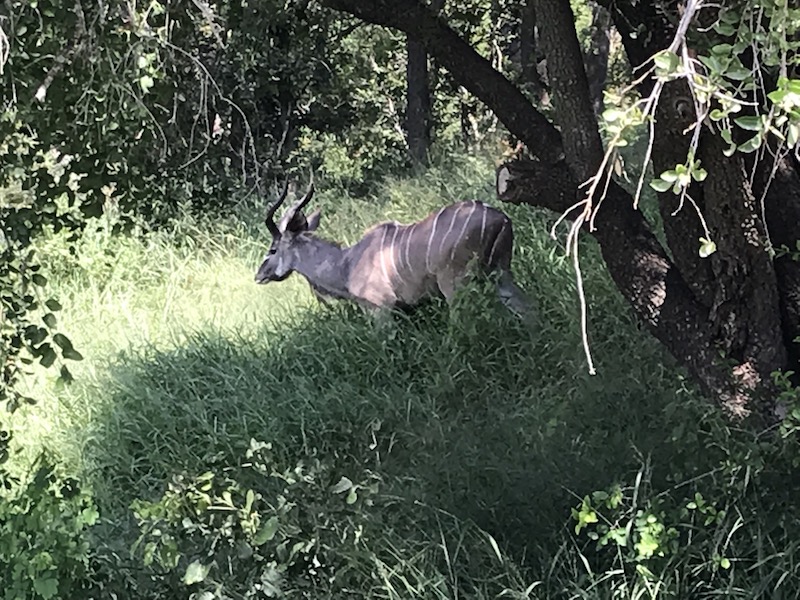

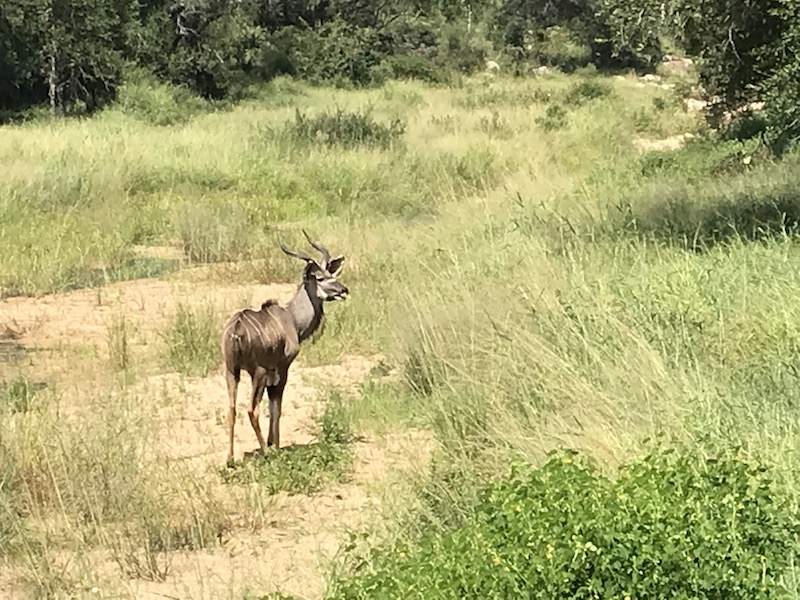
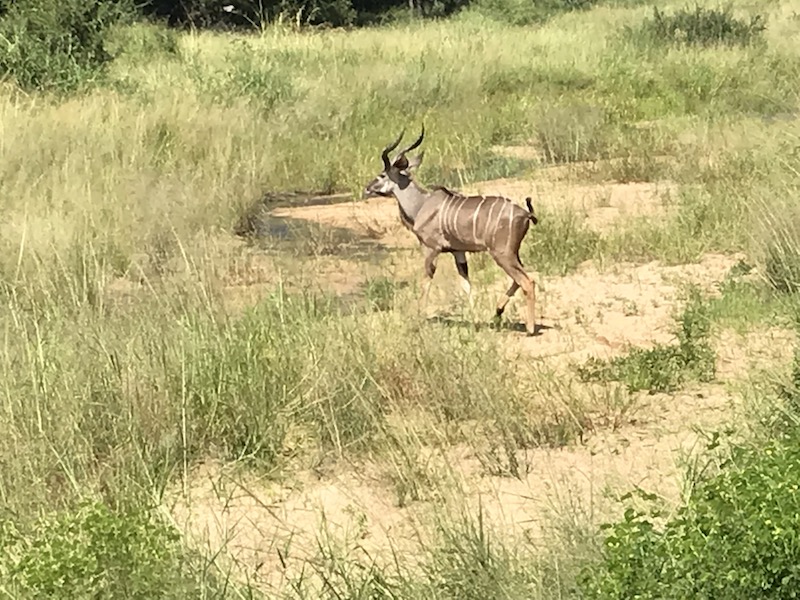
I know you are sick of impalas by now, but I thought these were nice close-ups to show the horns of the male.
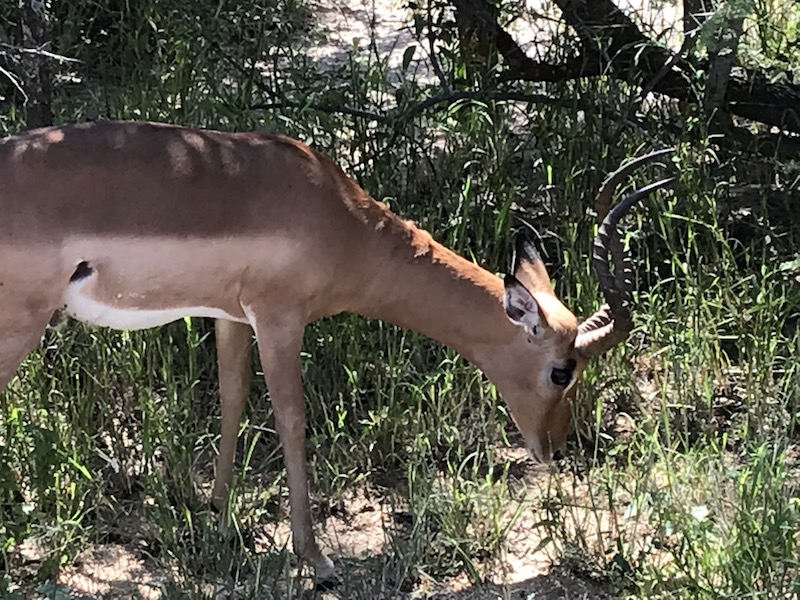

Hidden in the tree is a giraffe. We kept watching and he lifted his head to give us a better view, and then moved and turned to give us a nice look at his face. He then started heading off to the left, out from behind the trees.
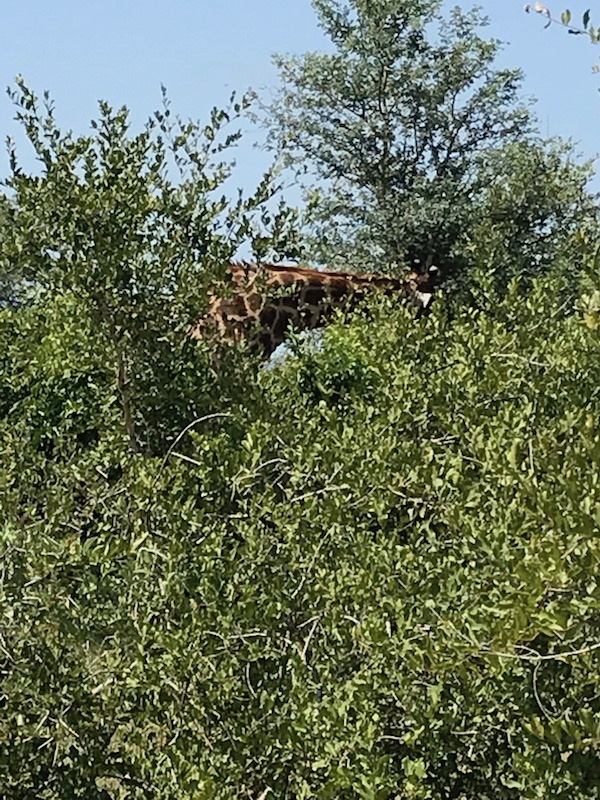
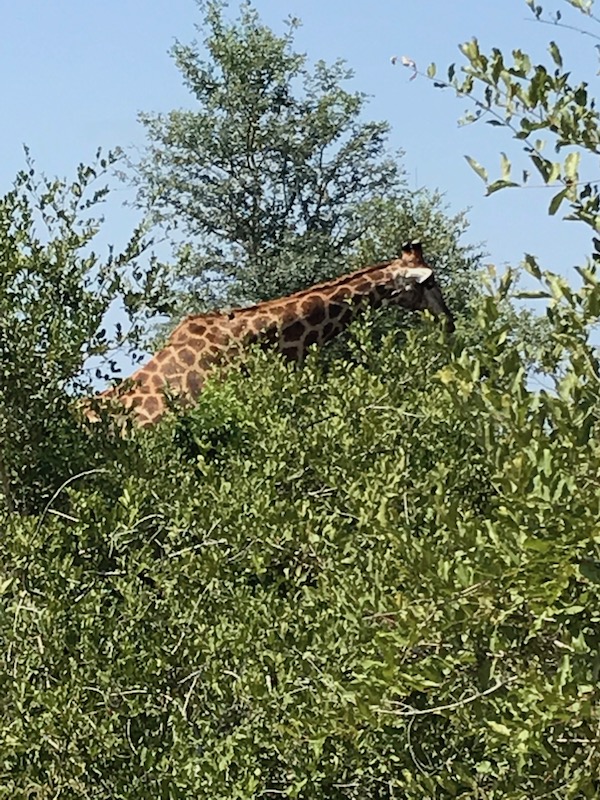
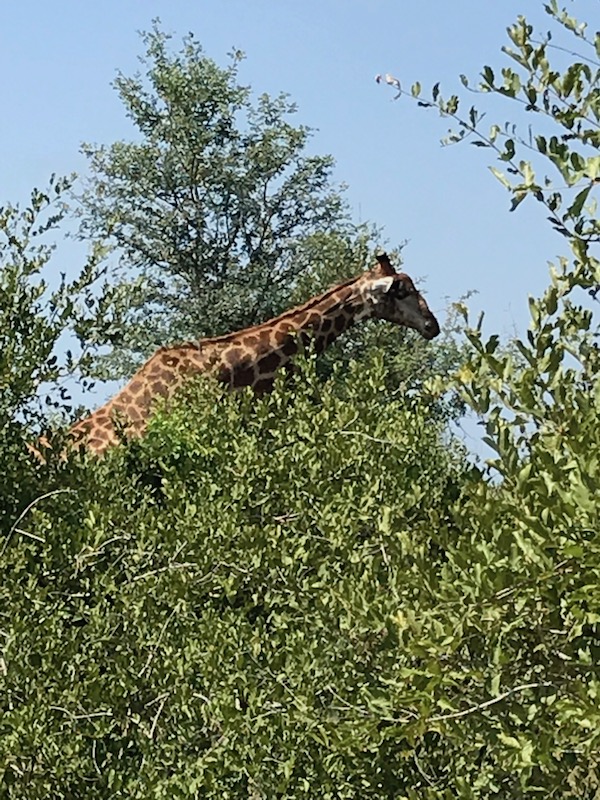
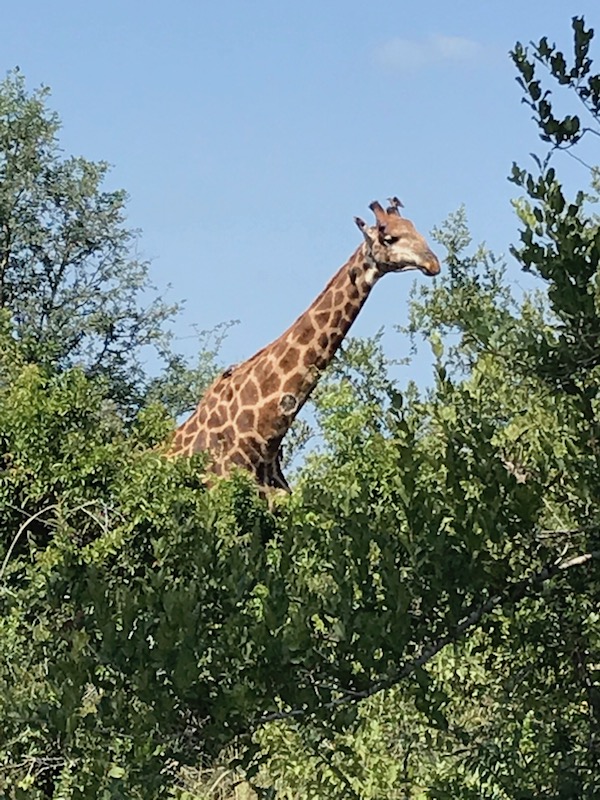

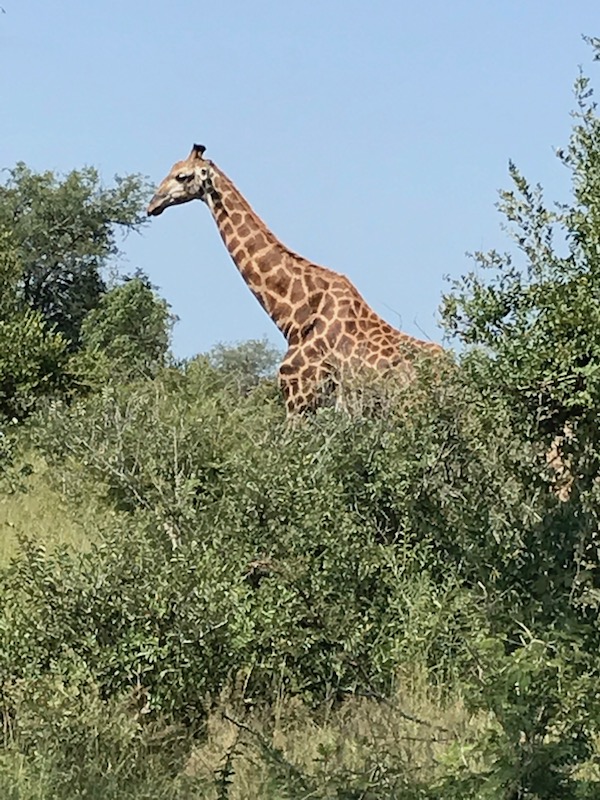

Not a long video, since the truck started moving, but the first couple seconds gives a nice view of the giraffe bending down to eat again.
Another male elephant eating alone.
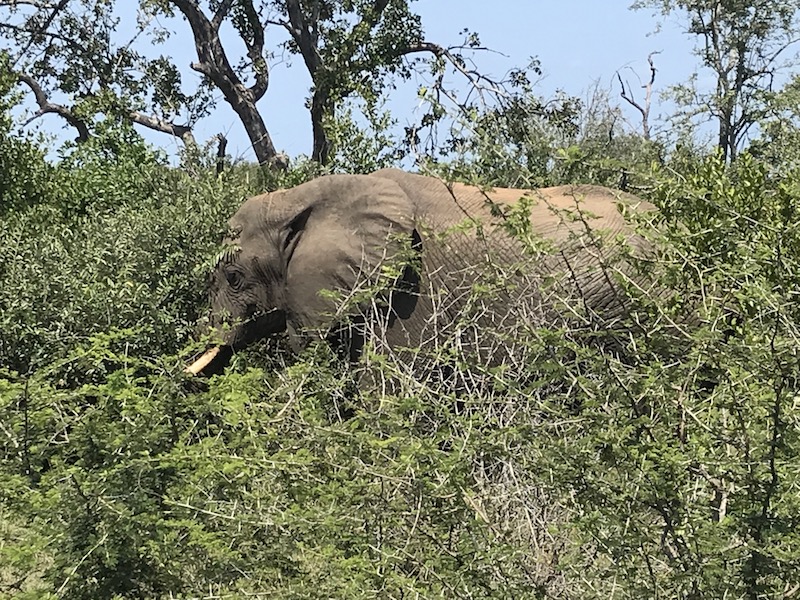

Not a great picture of the animal, but in the middle is a greater kudu and I thought this was a nice angle to see the horns, and how they form little spirals.

After not seeing zebras the first day, I mentioned that Kruger made up for it. Another herd of zebras here. An interesting thing that they seem to do is that they put their heads on each others back. Our guide mentioned that they do this to help each other by flipping their tails at the flies that are buzzing around the face of the other zebra. They can't do it easily for themselves since the tail isn't long enough to reach their face, but they can help their buddy out. You can also see in the last picture how sometimes, the impalas are sharing space with the zebras.


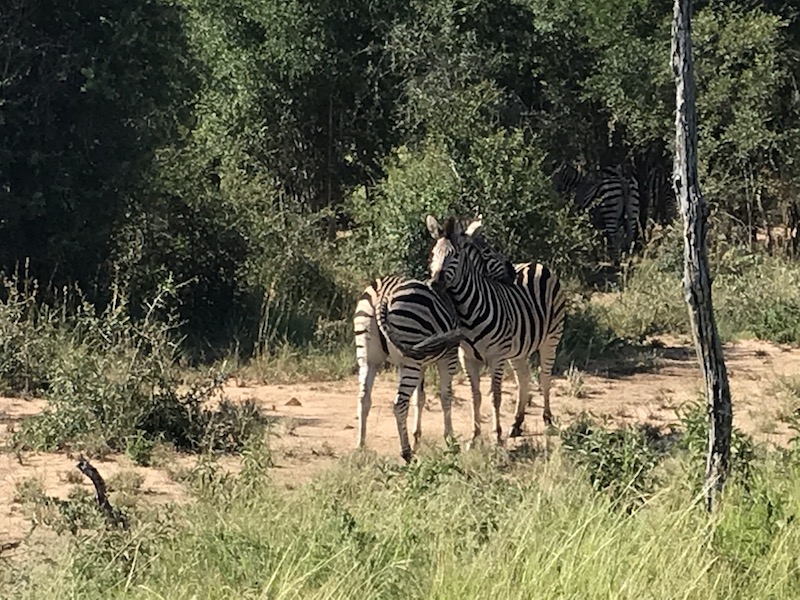

As we were heading out of the park, we came across yet another single male elephant. He seemed like he was fairly old, based on the size of those tusks. I was lucky enough to get one picture that shows him eating with the truck in the mouth.




Hard to see, but there are several animals on the other side of the water hole, near the edge.

You can go back to the main Safari page or continue on to Day 9